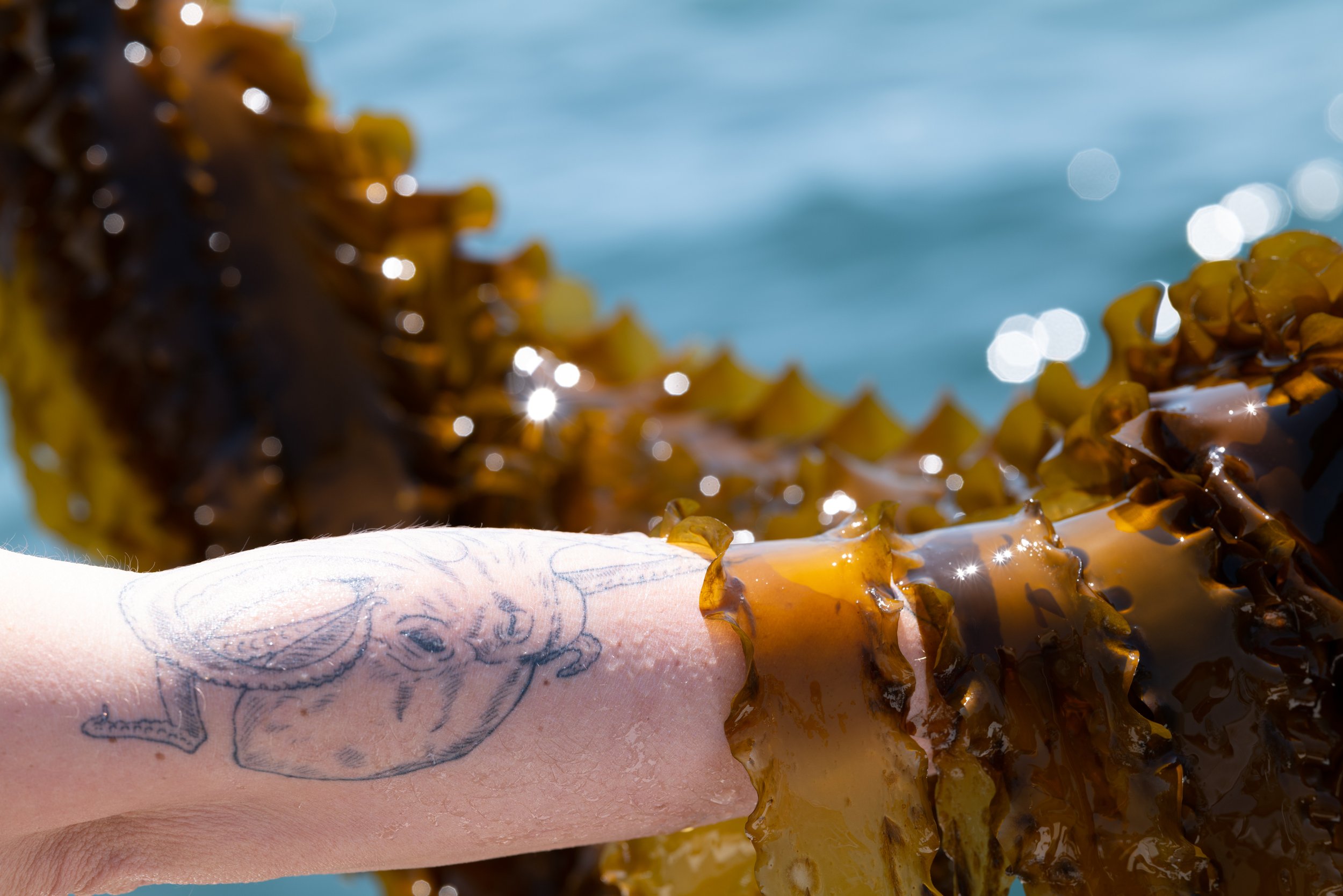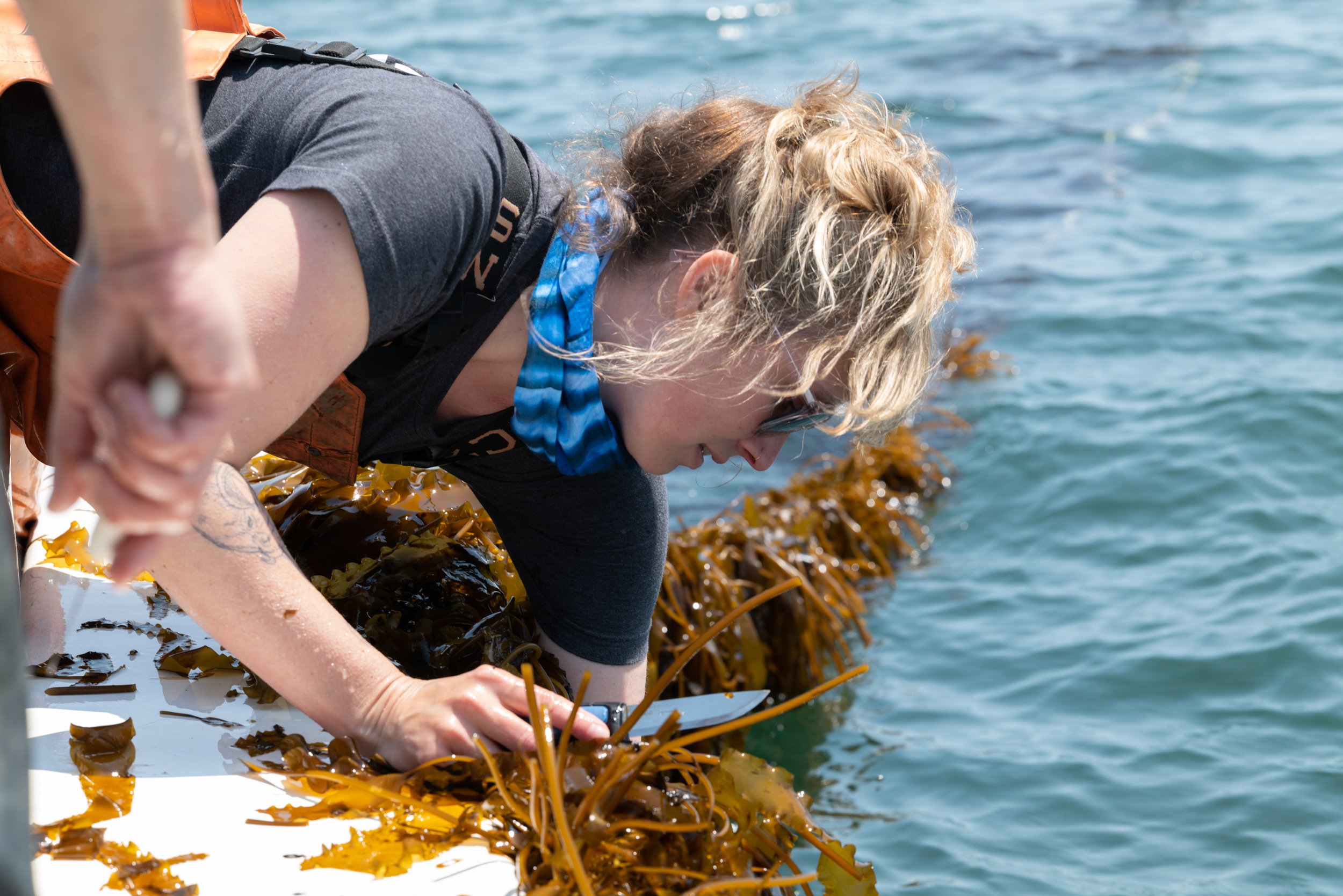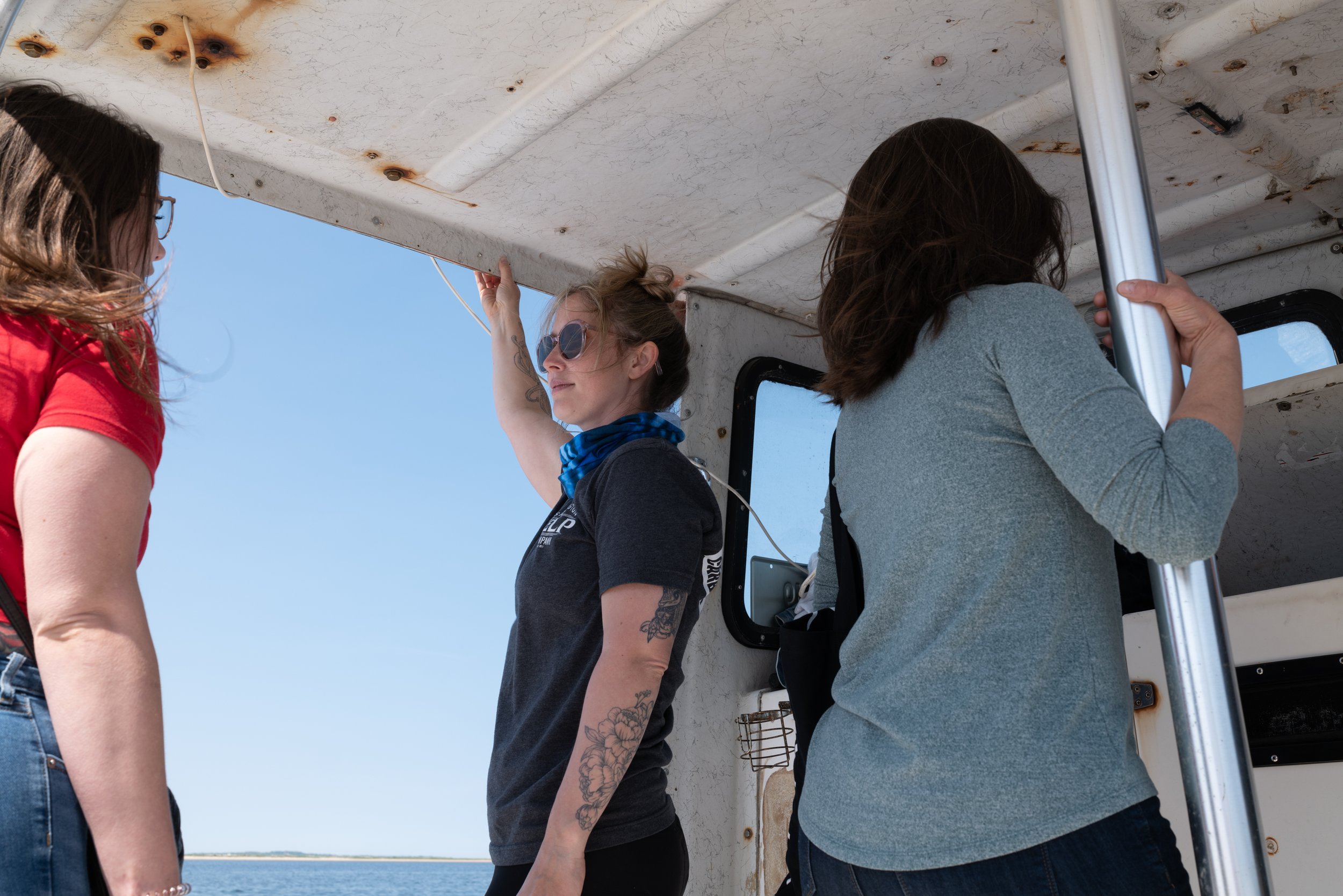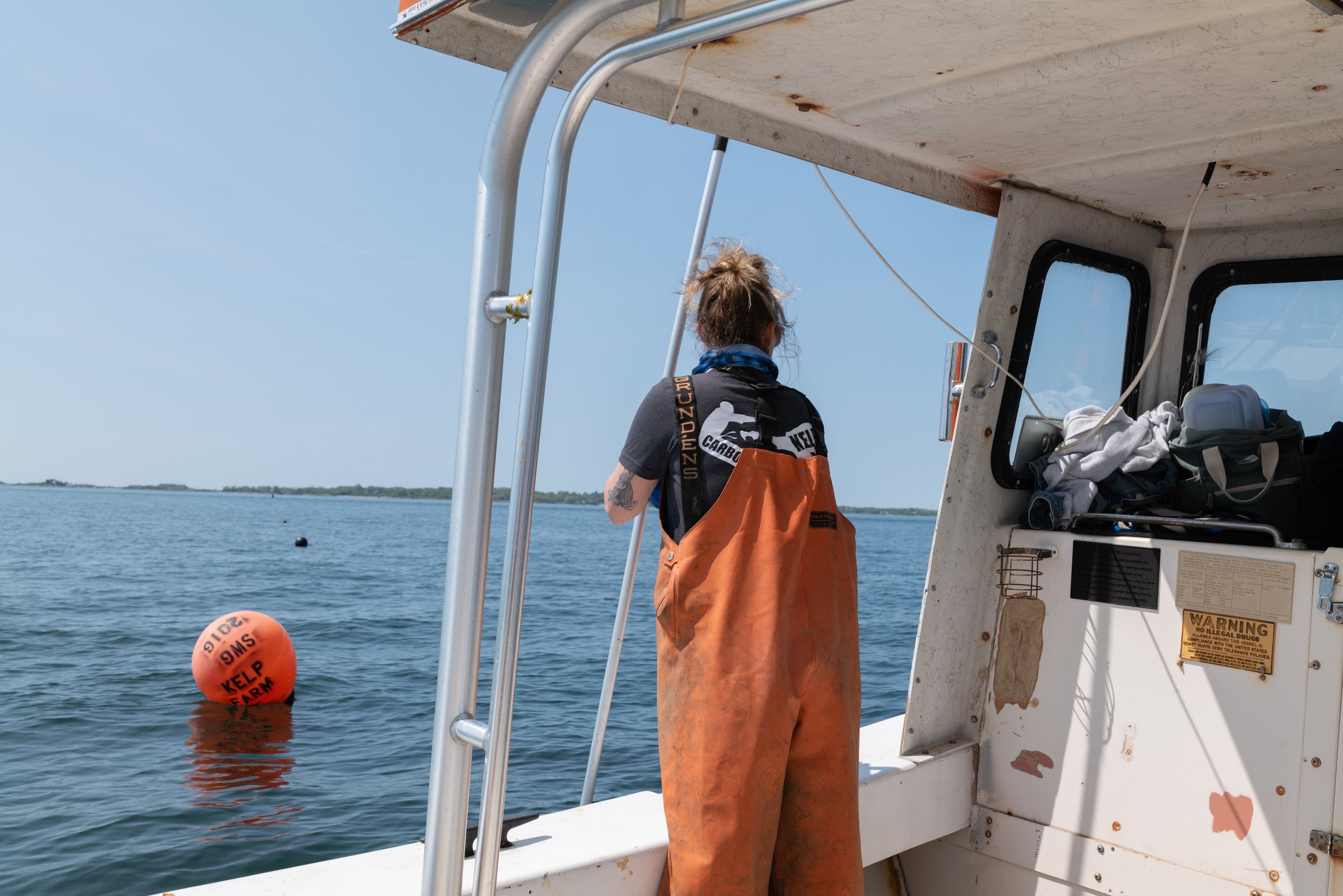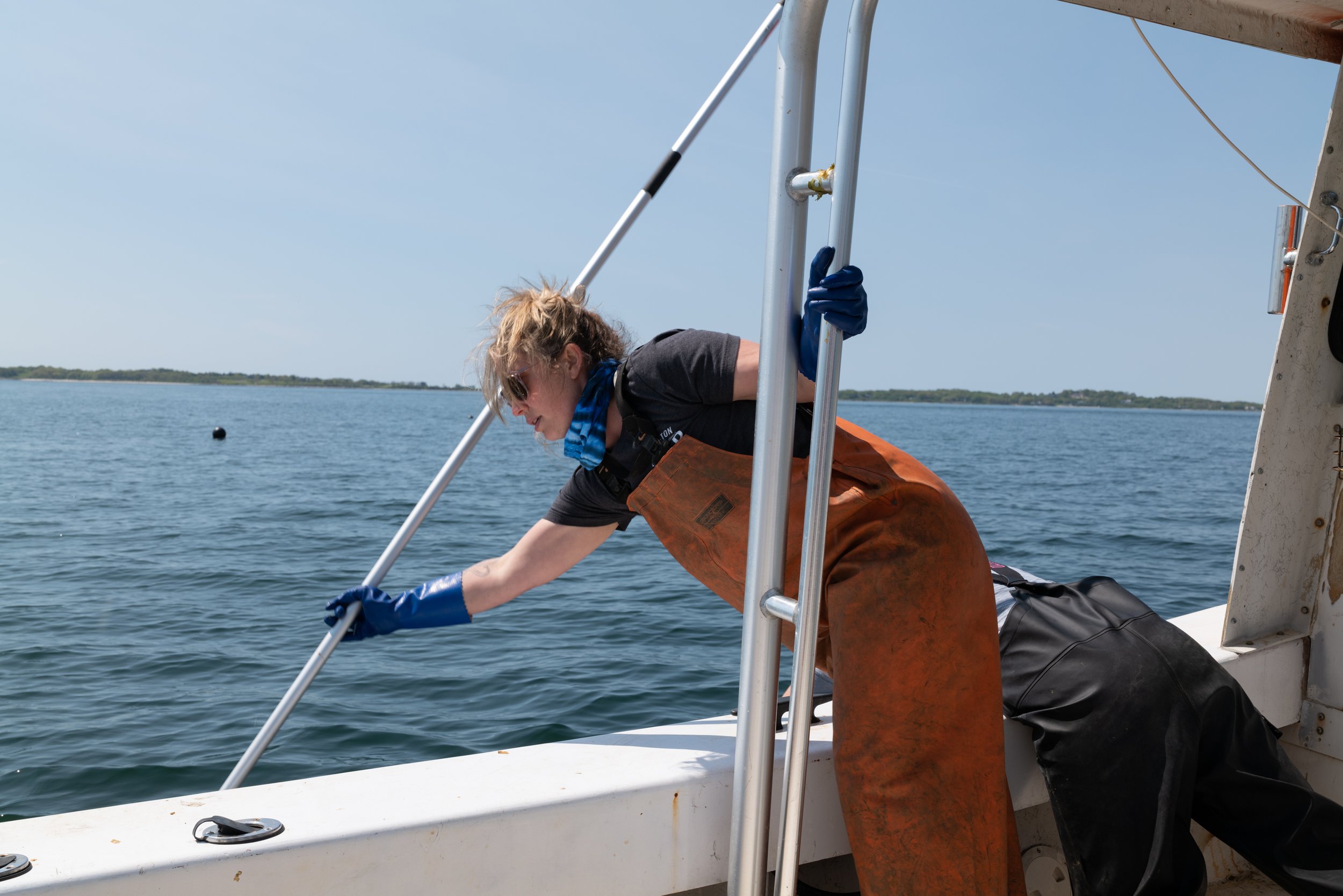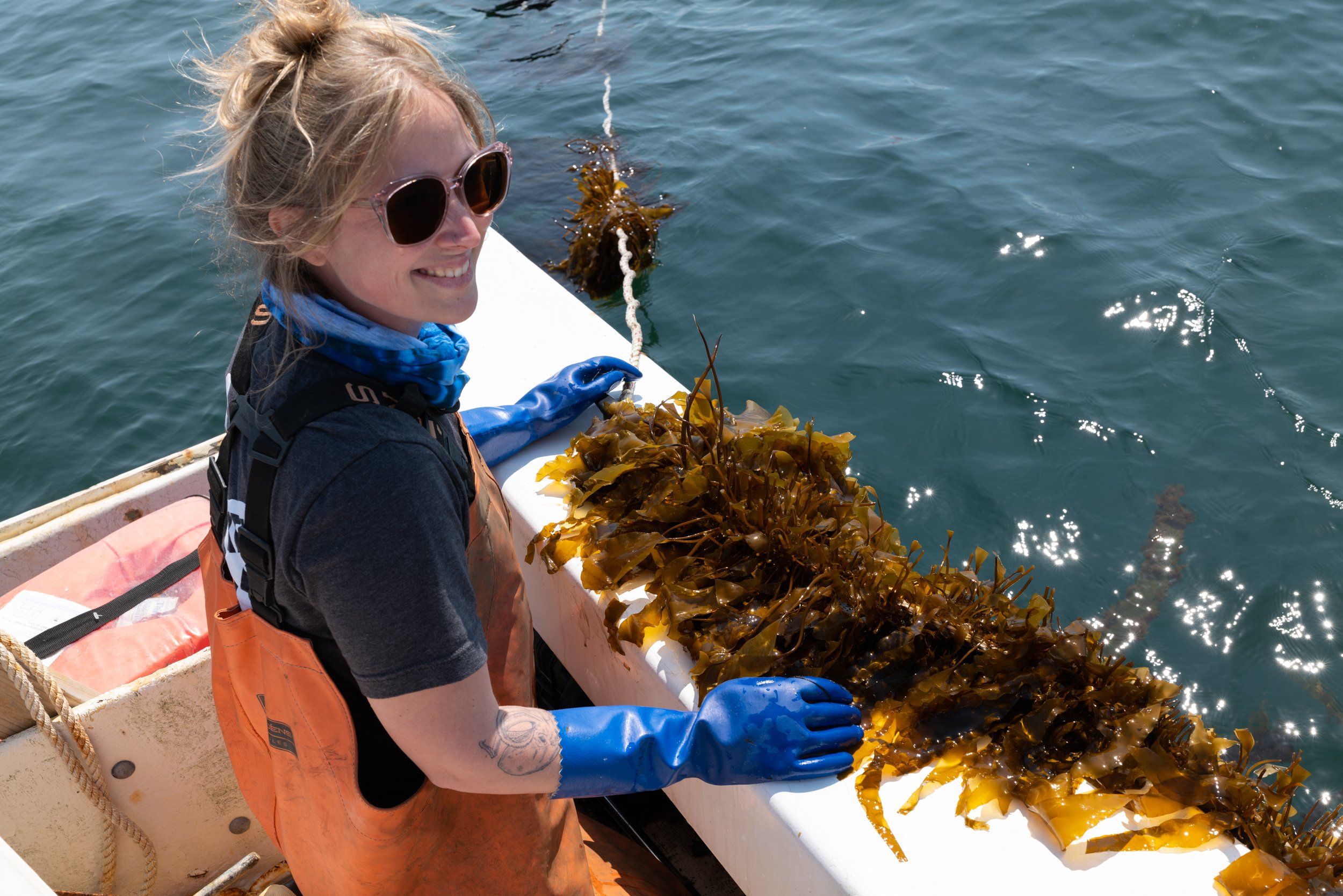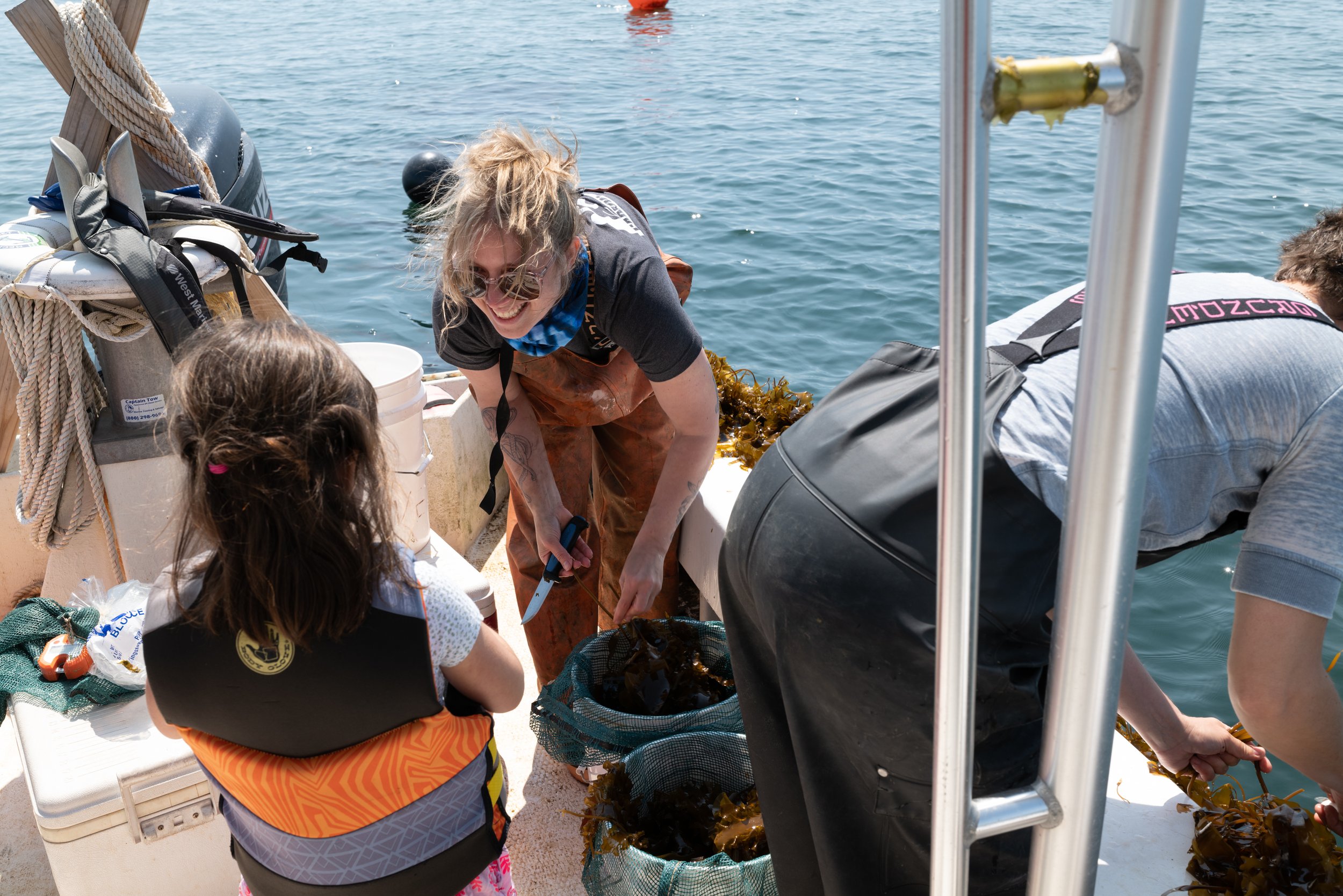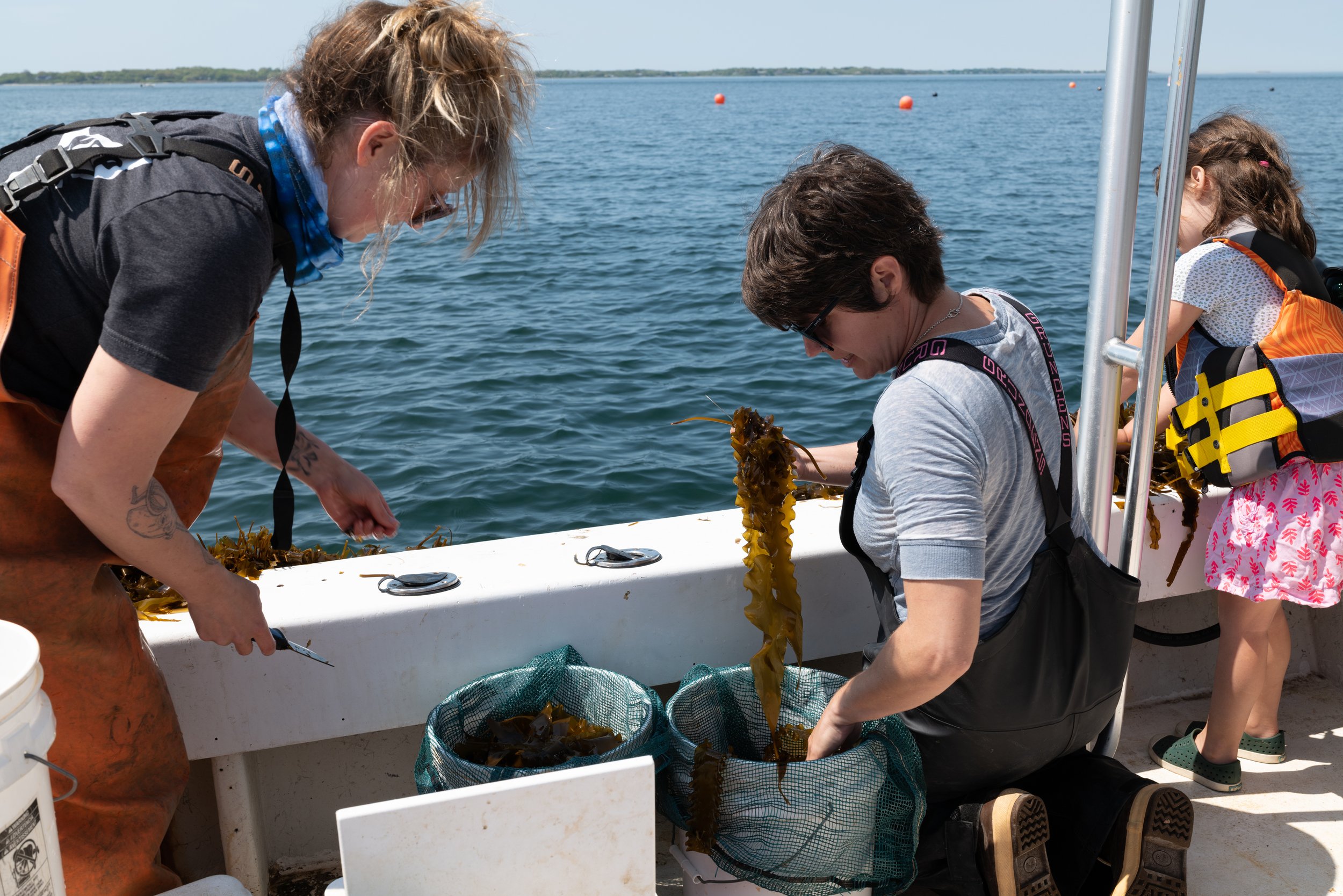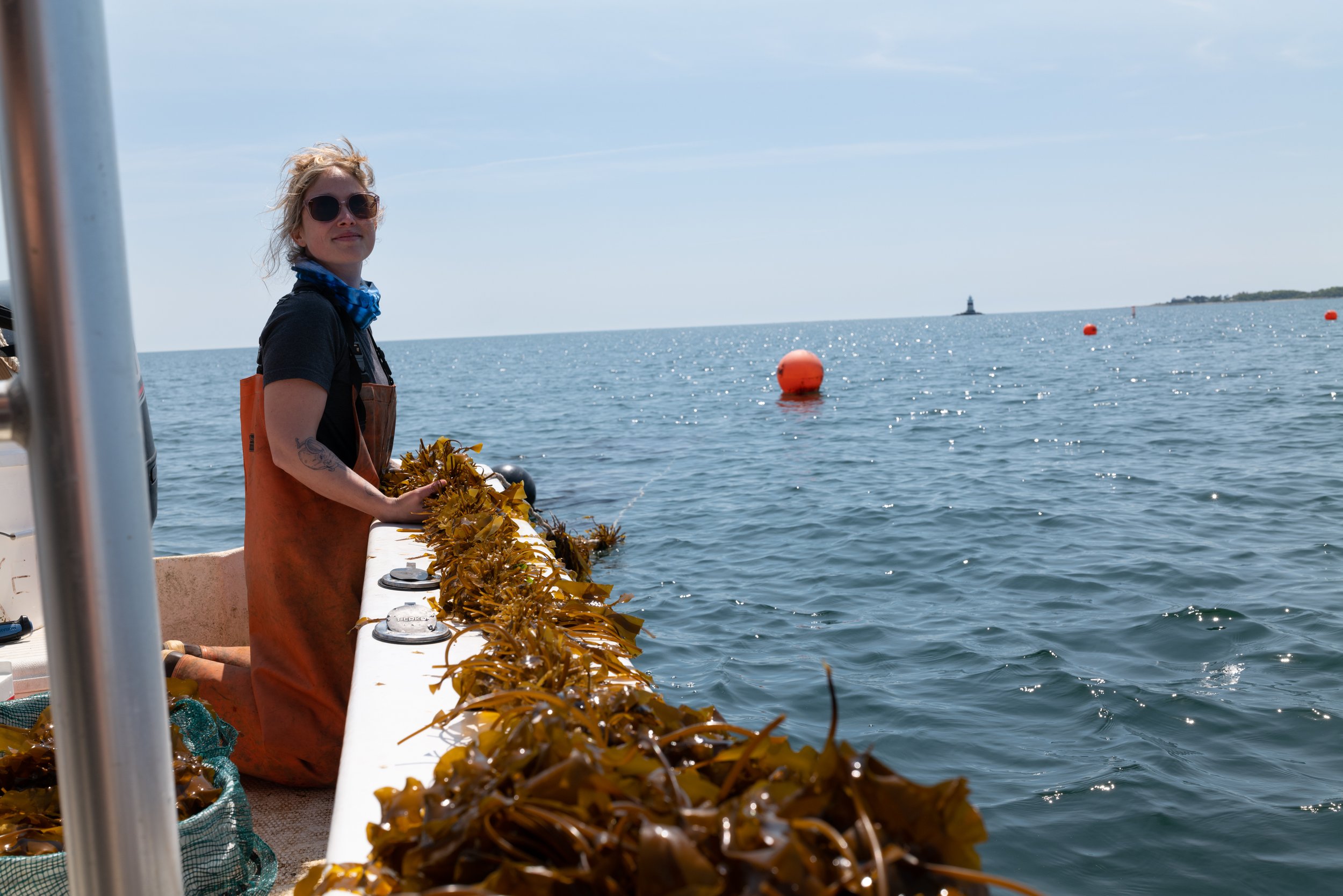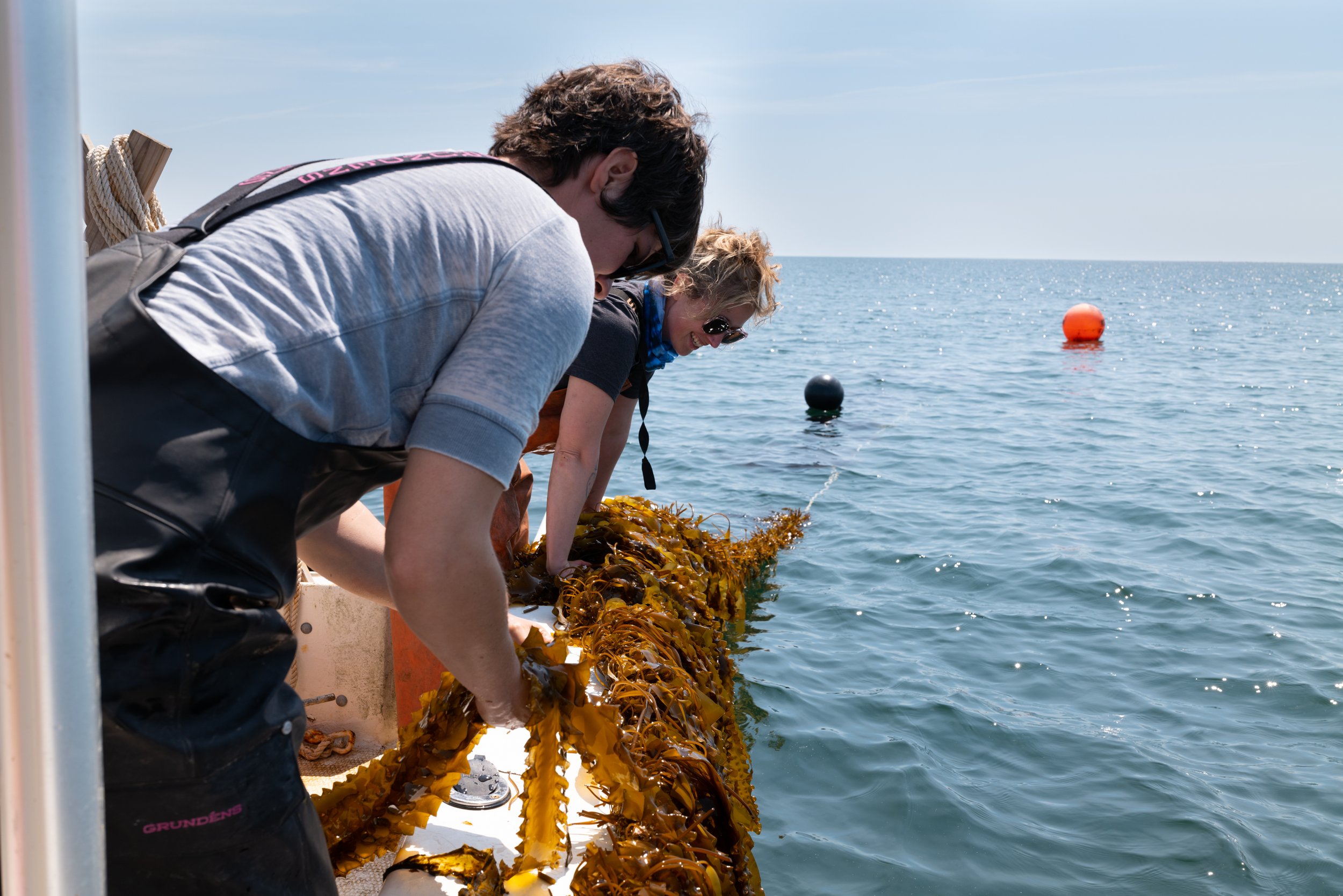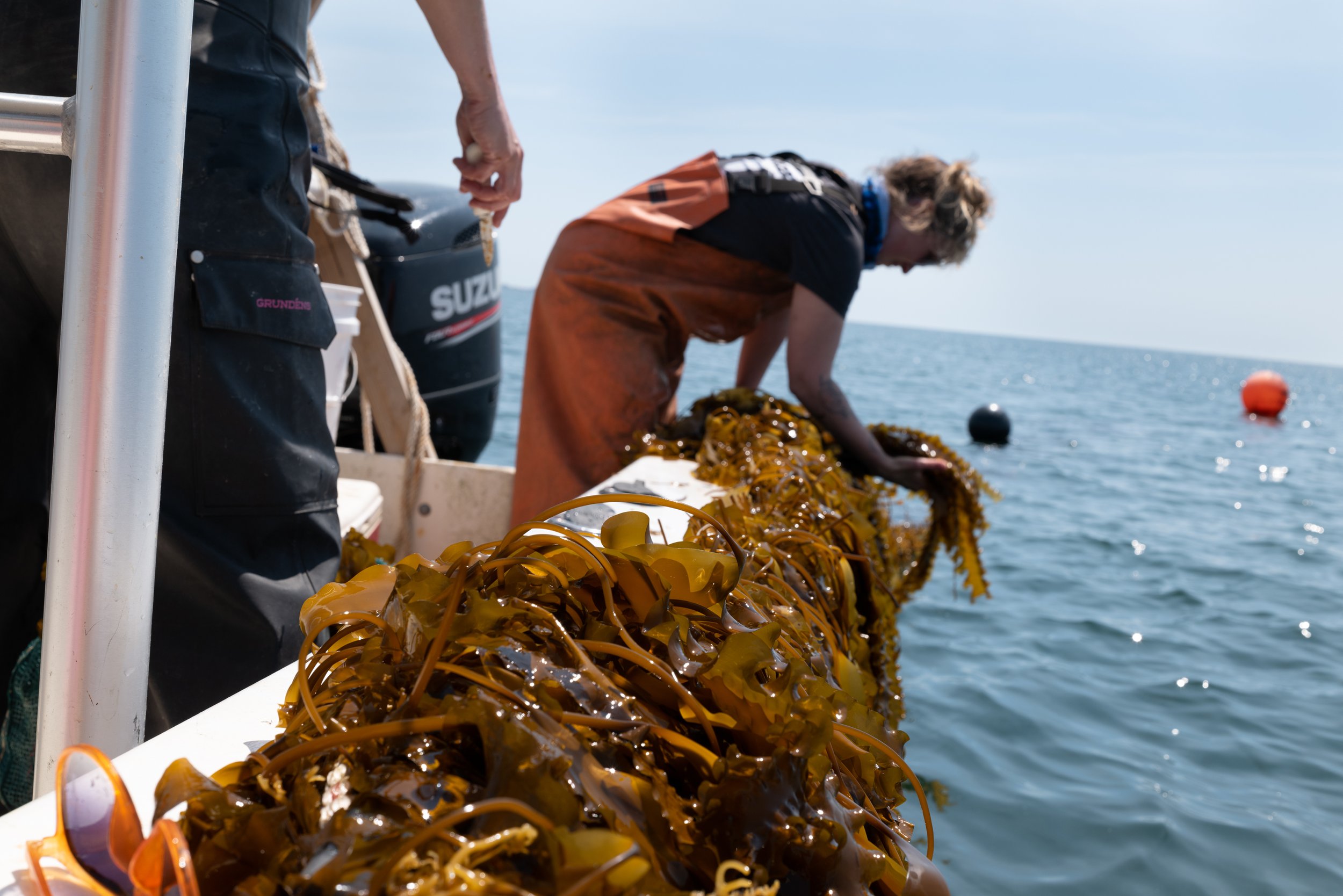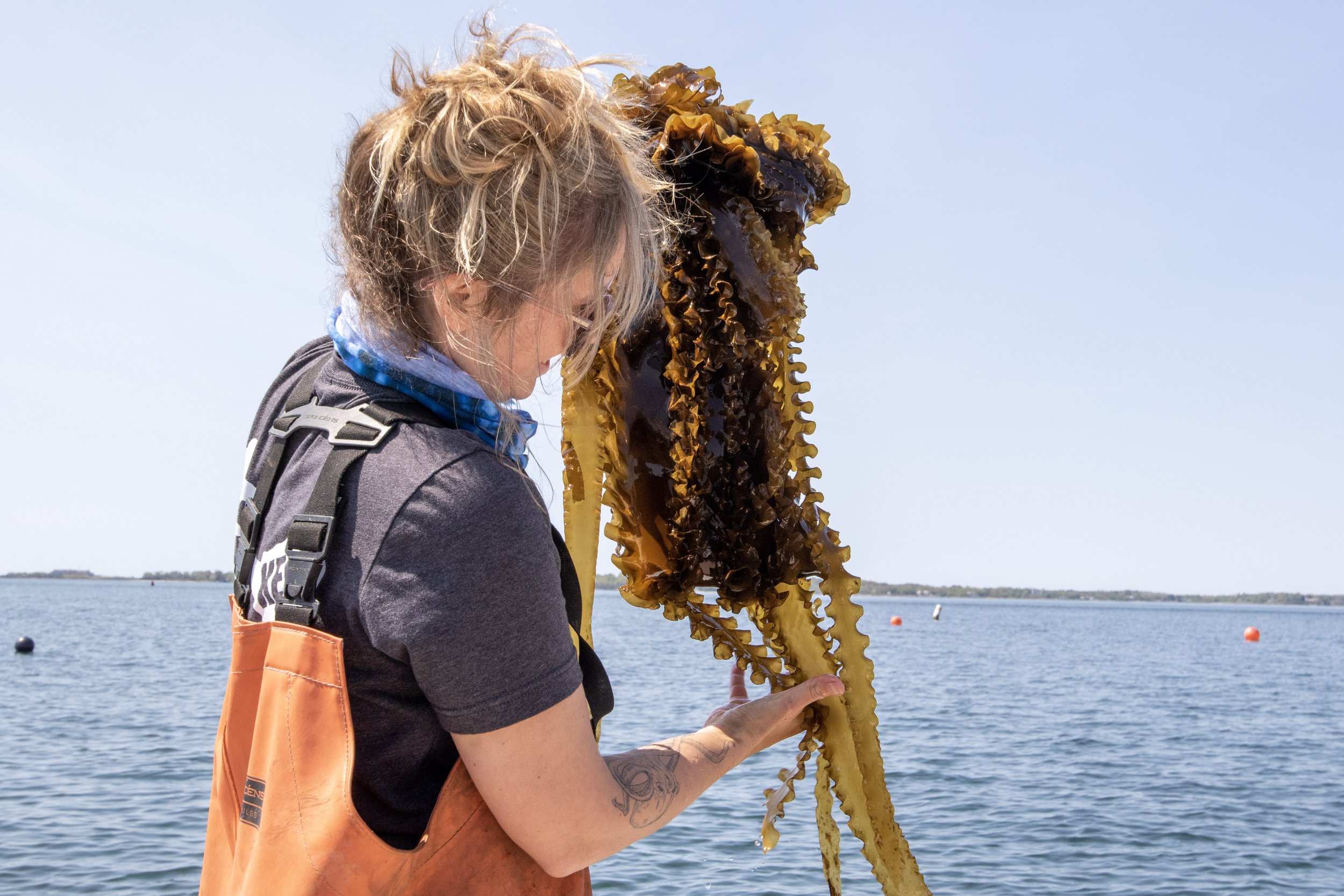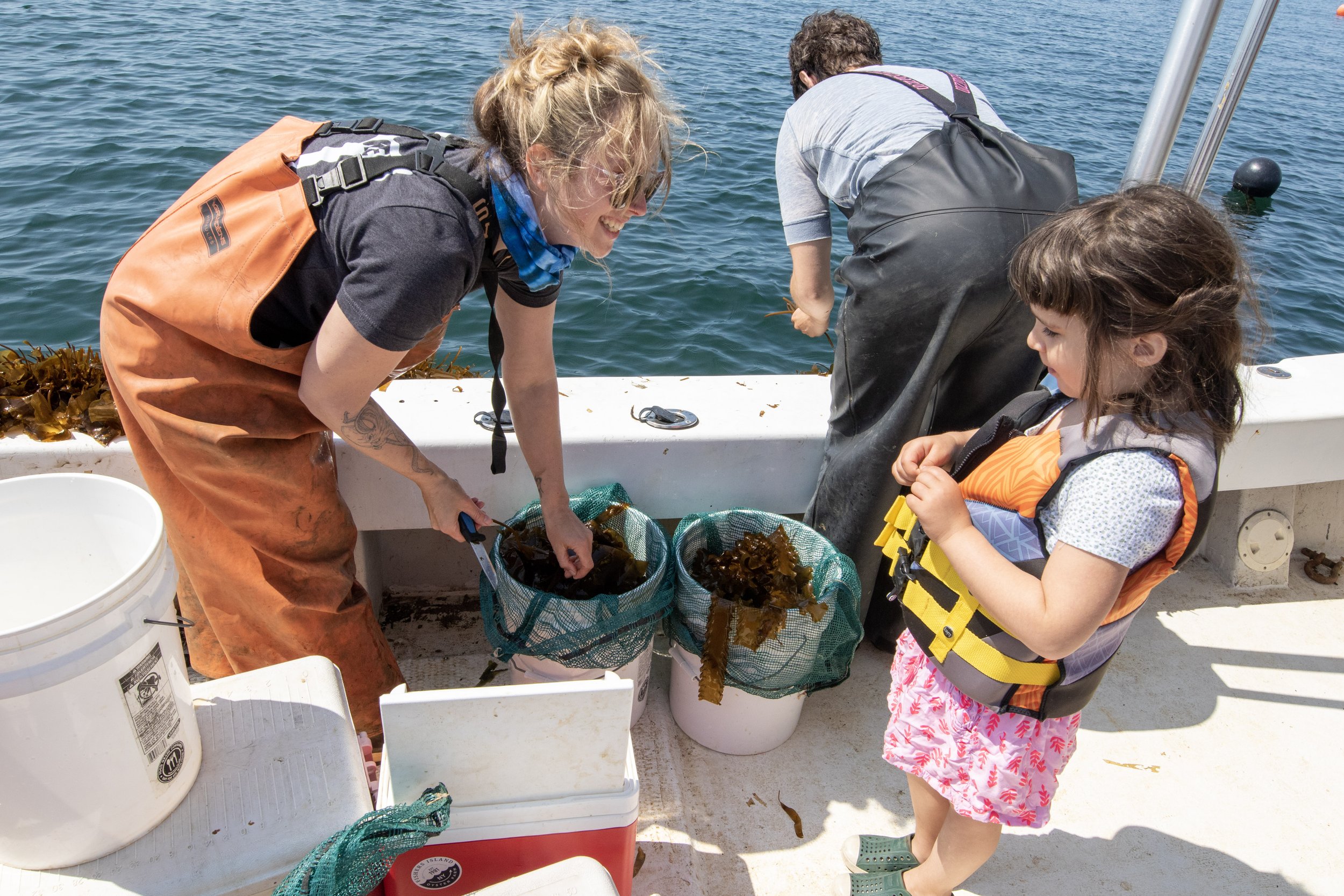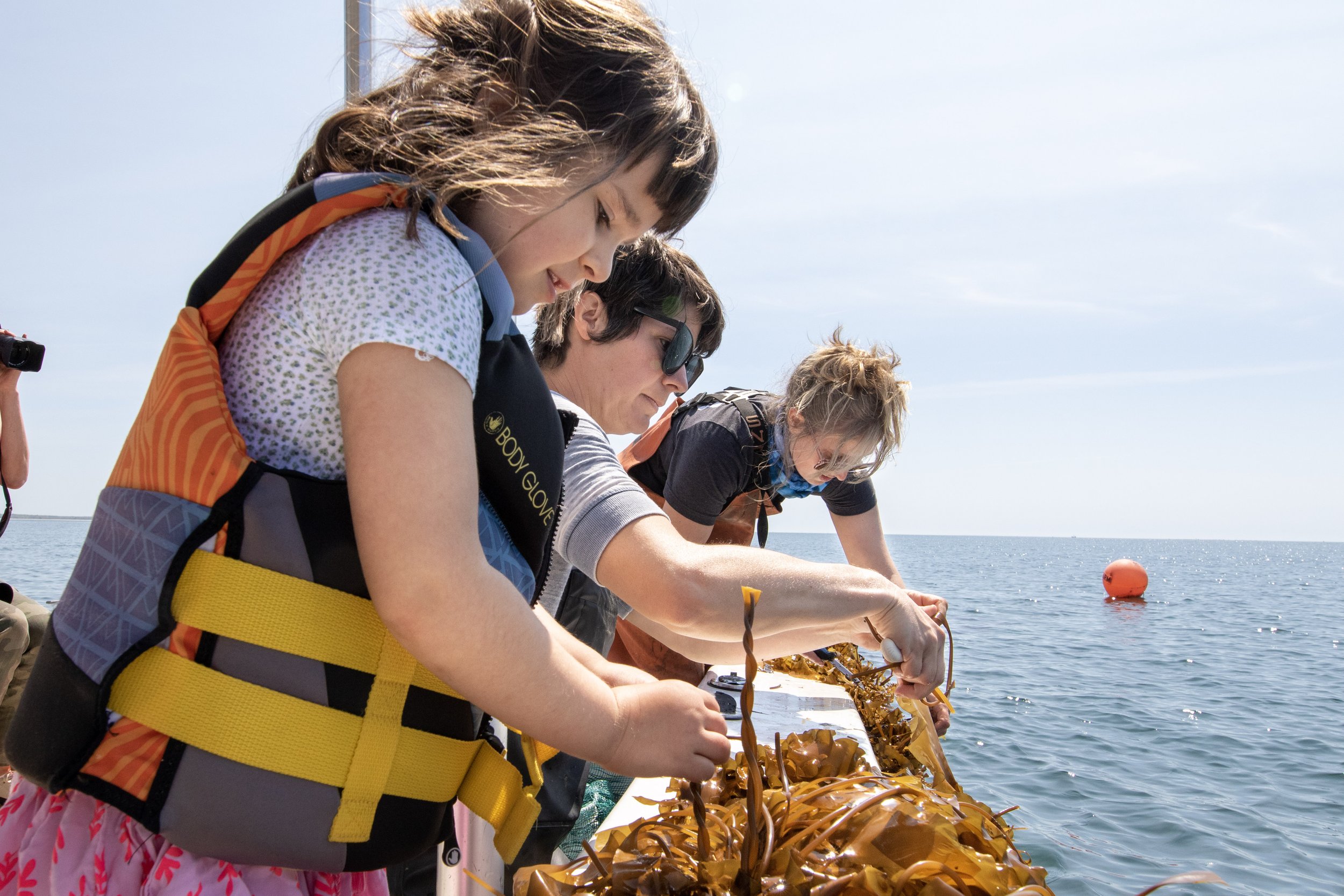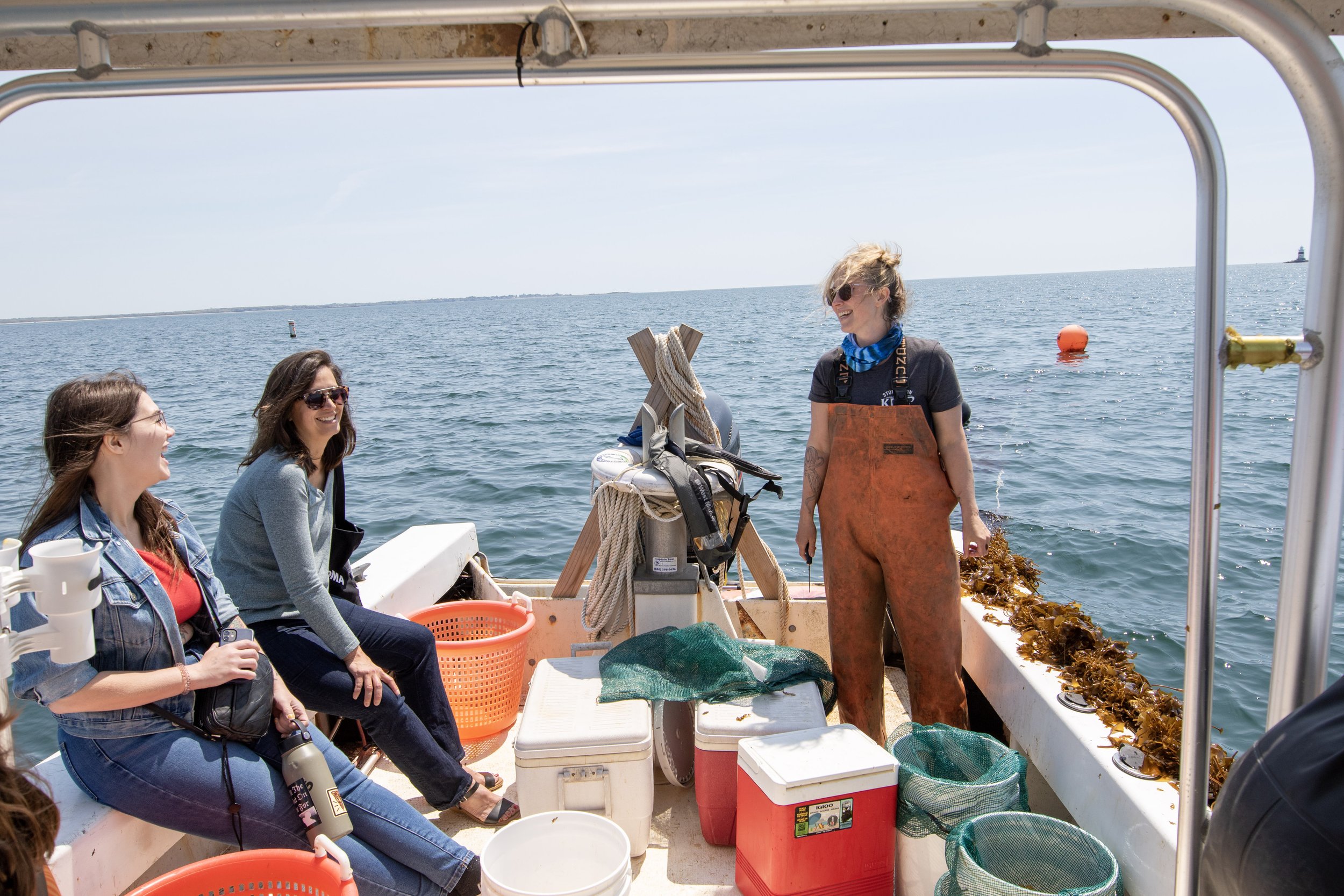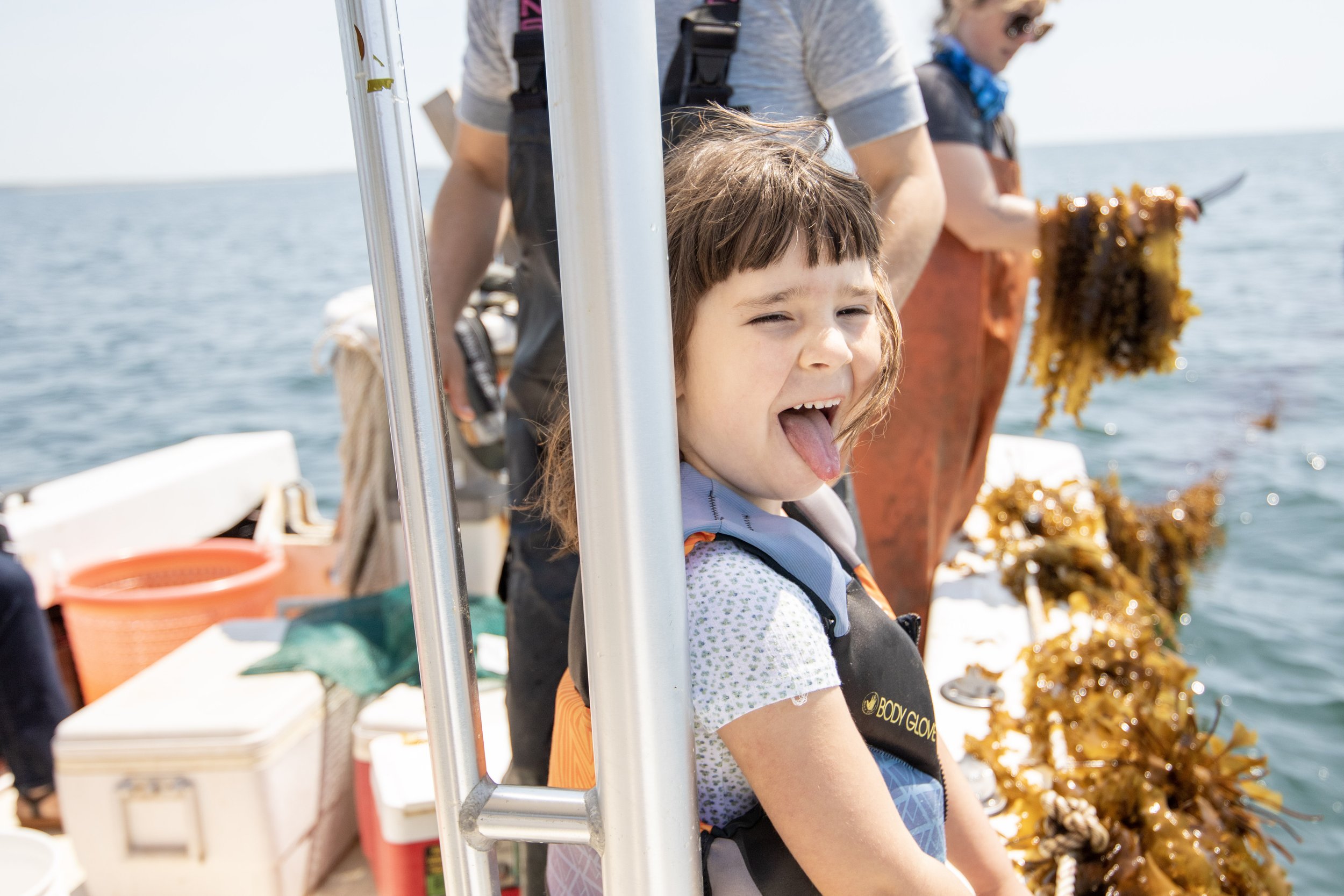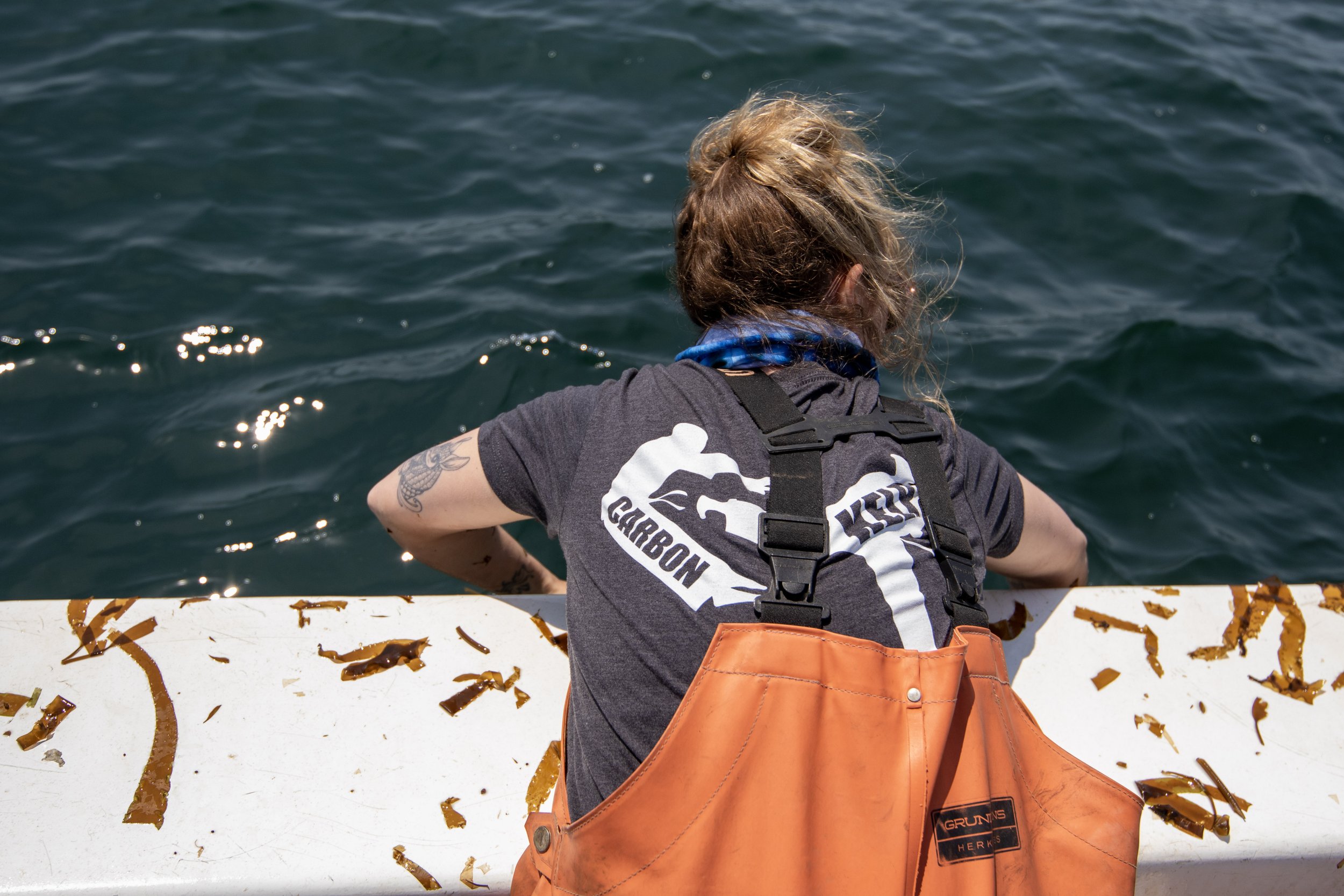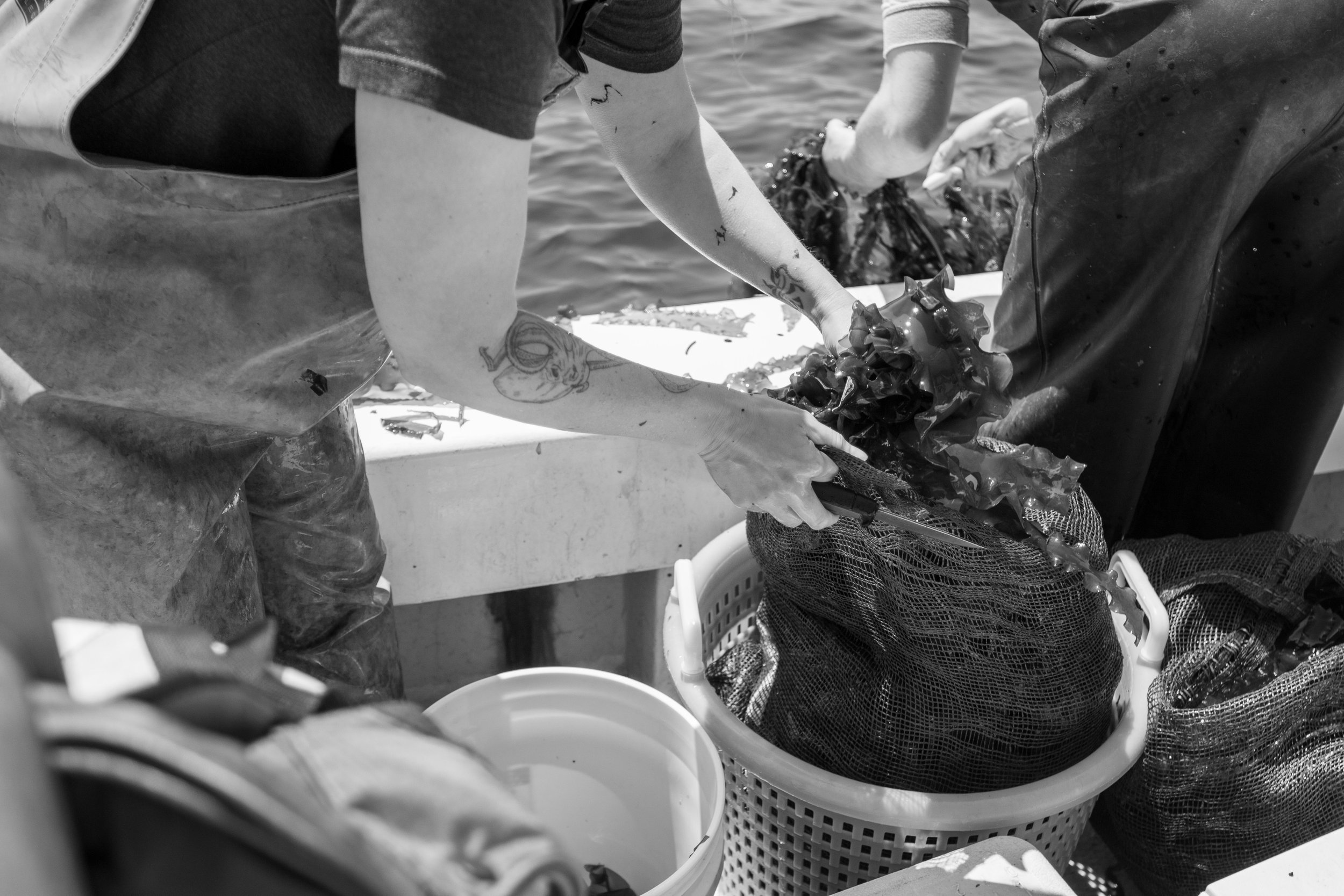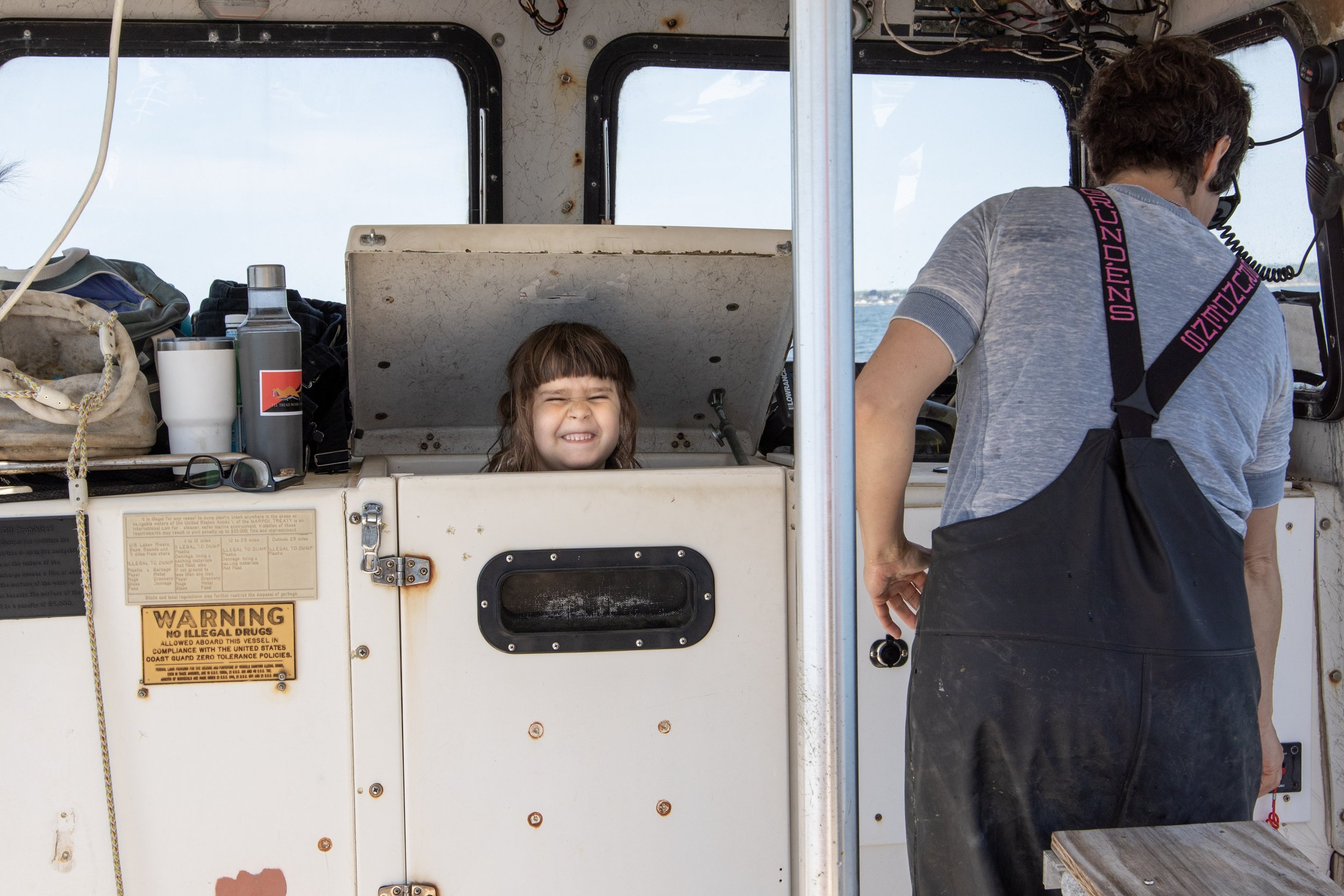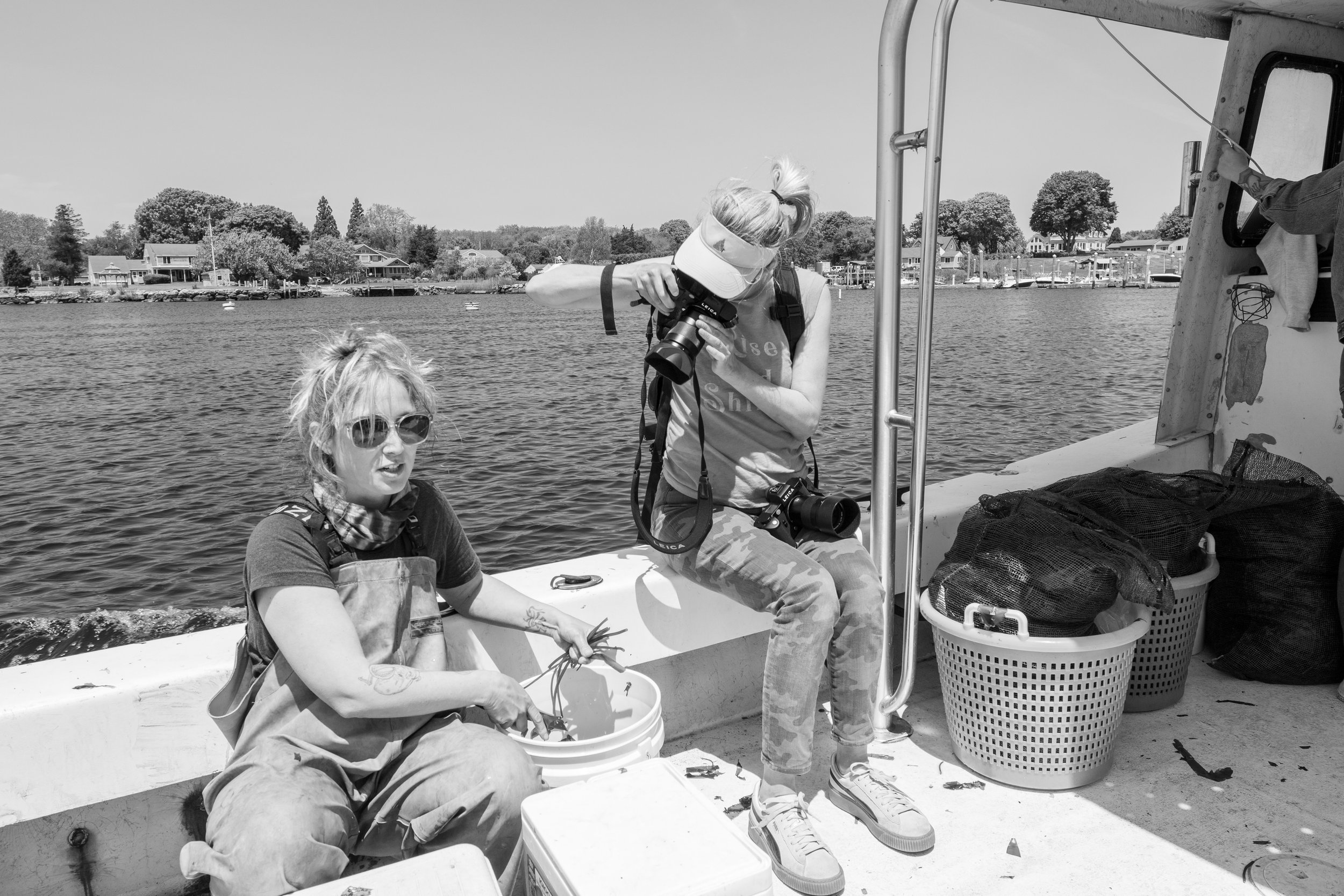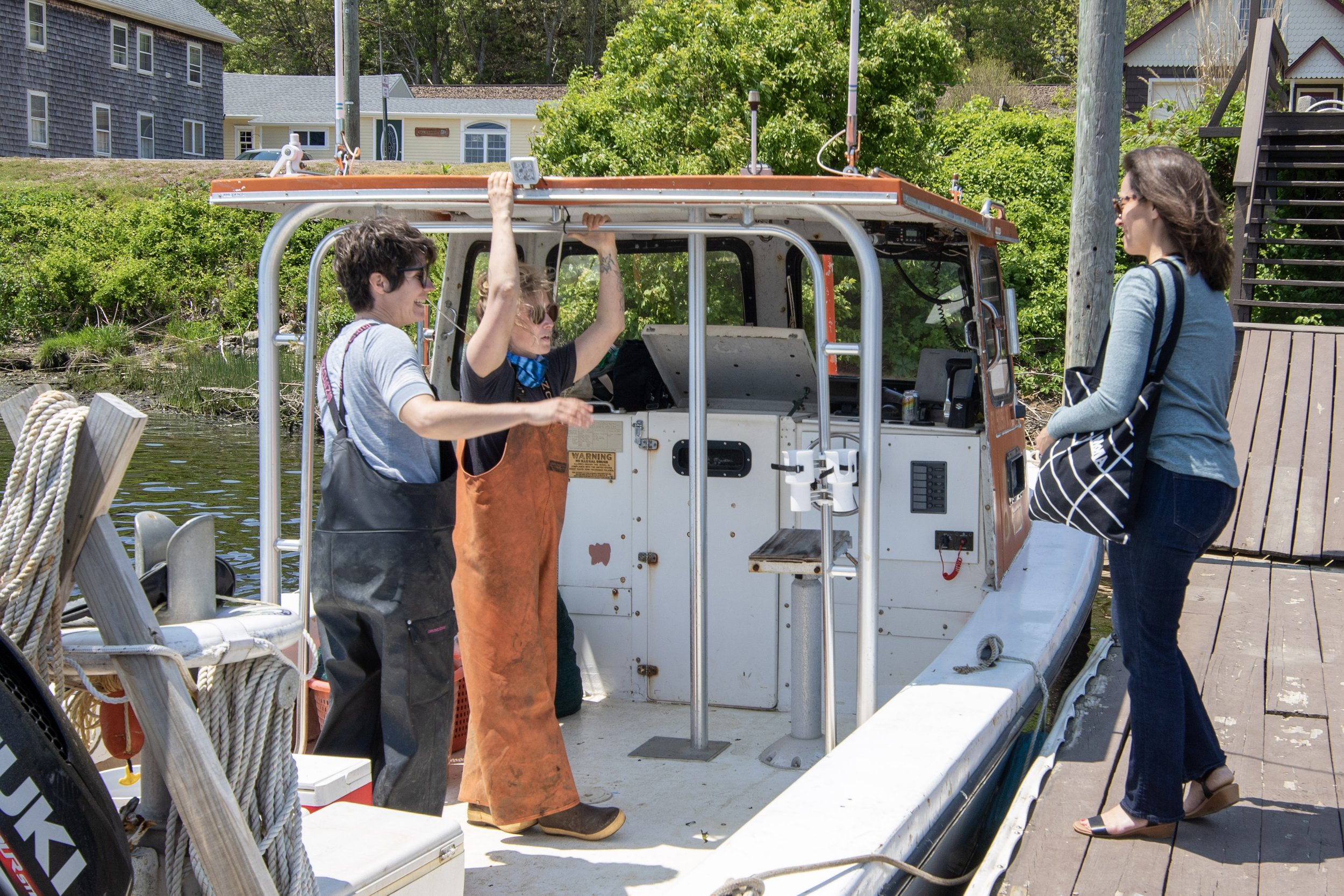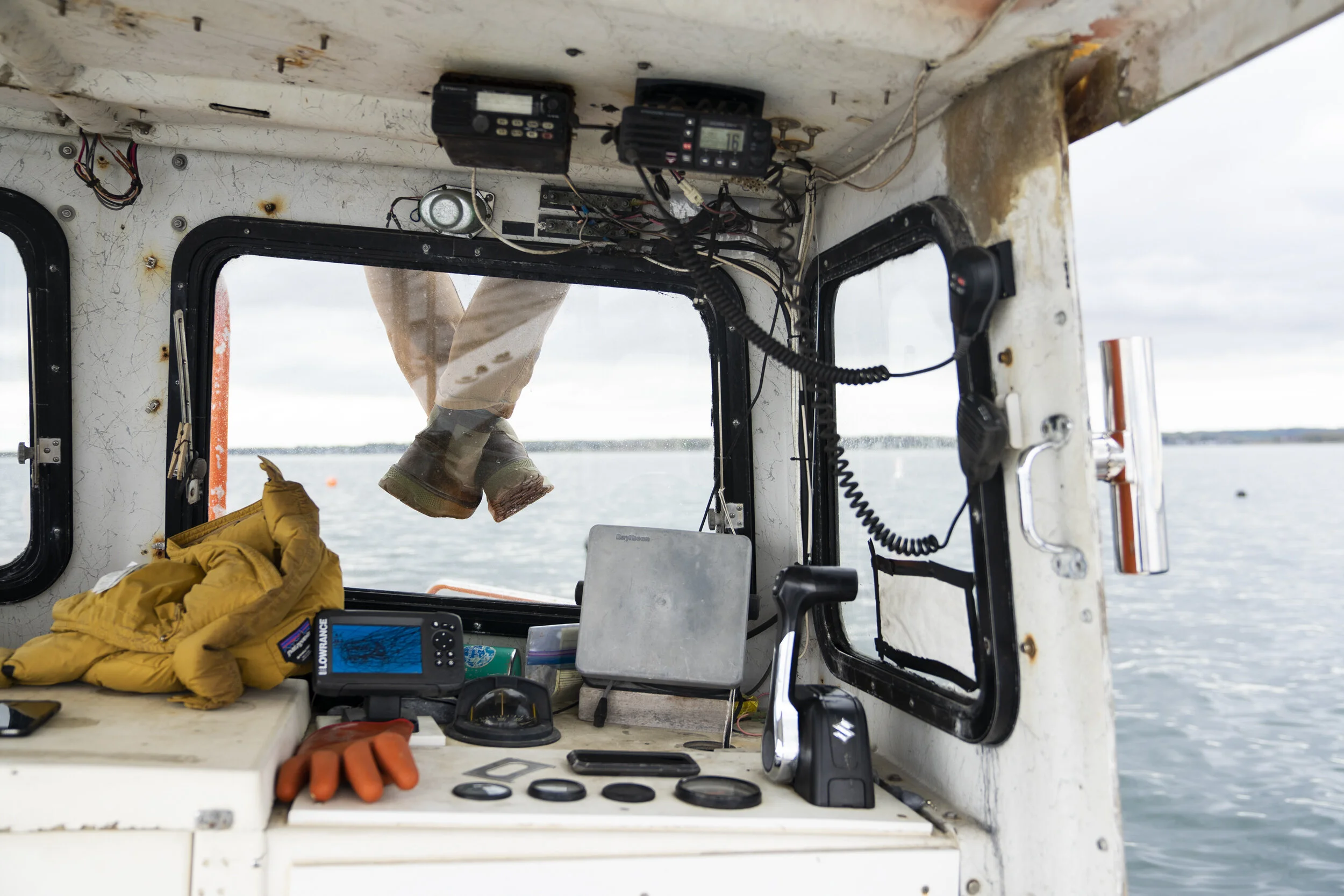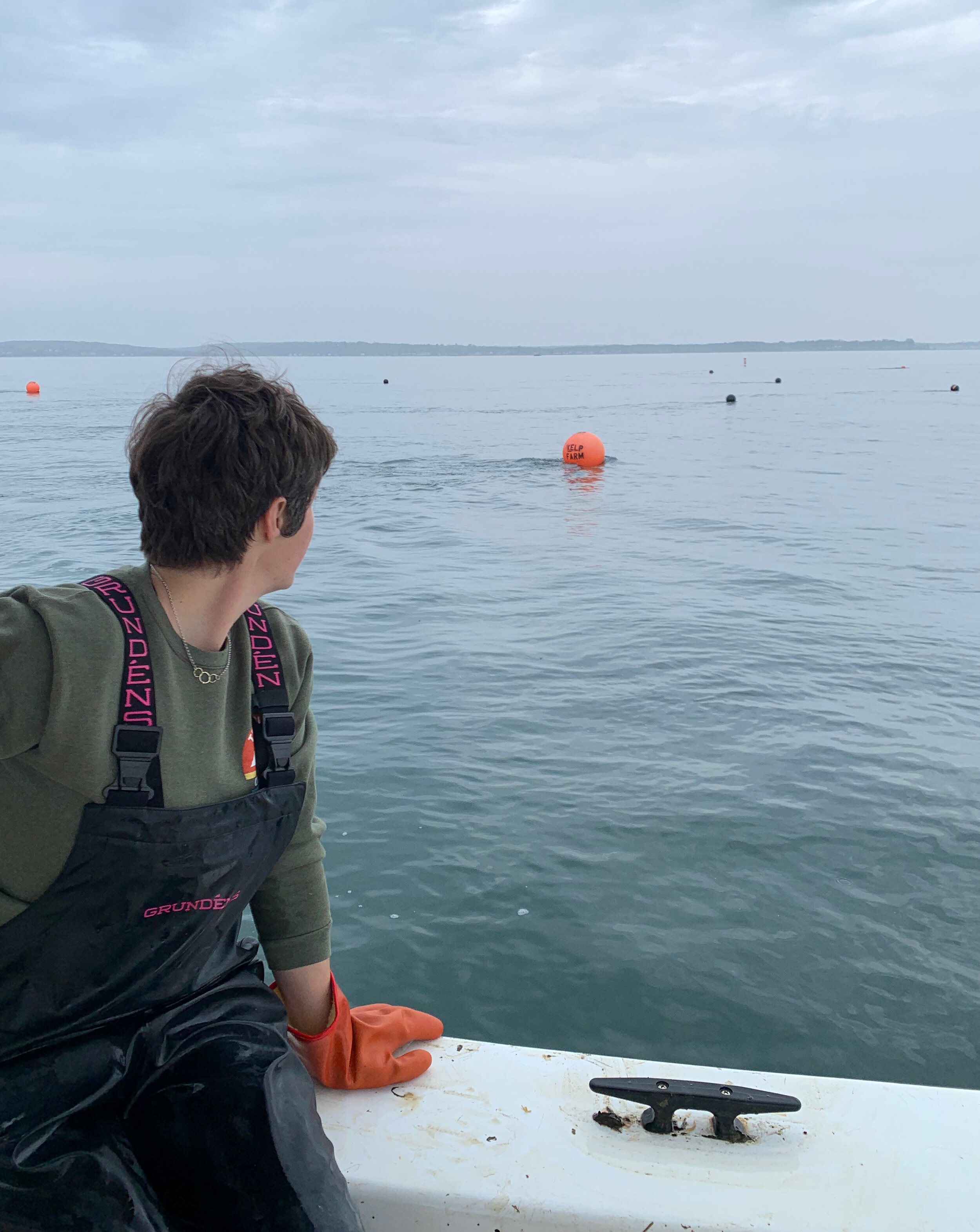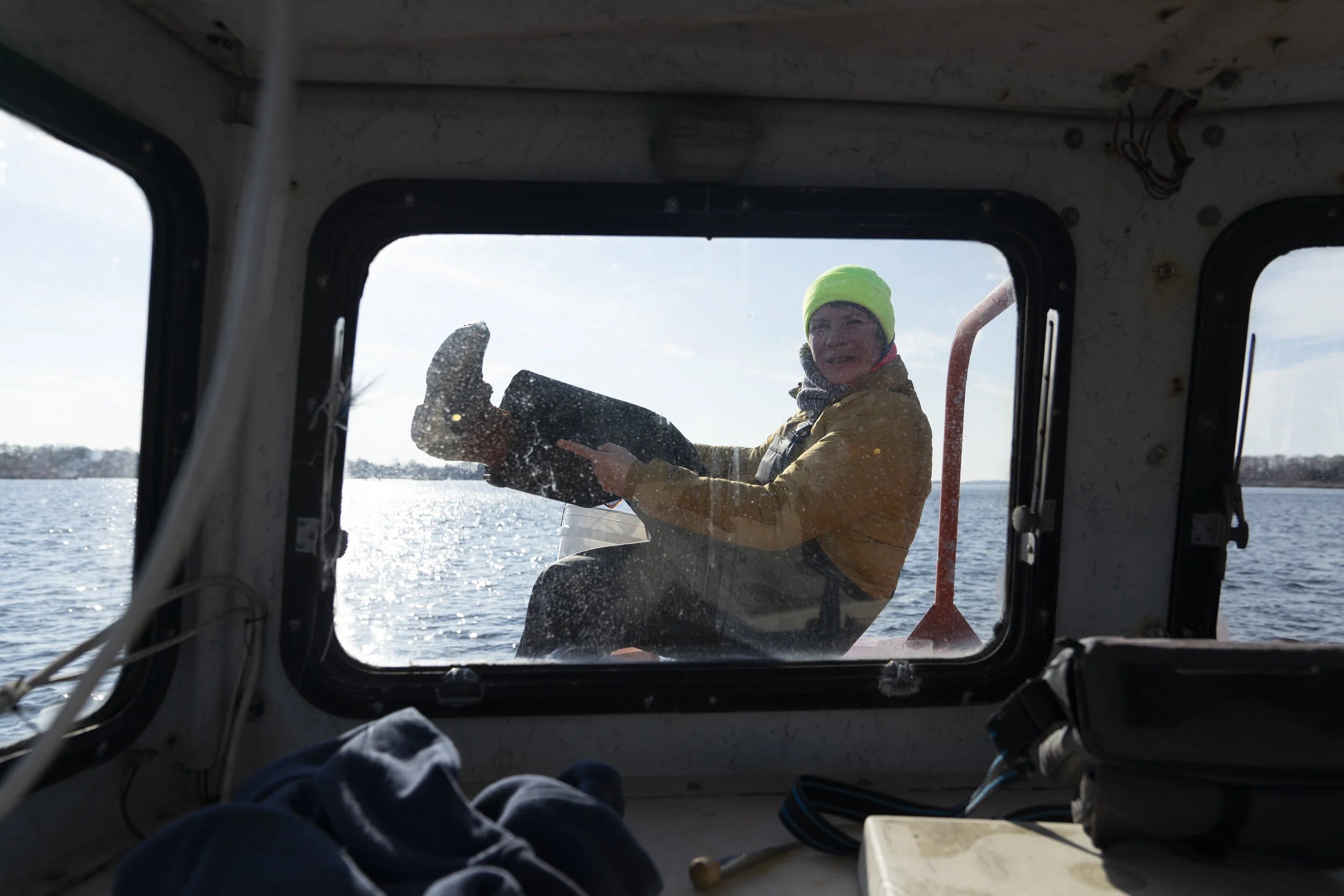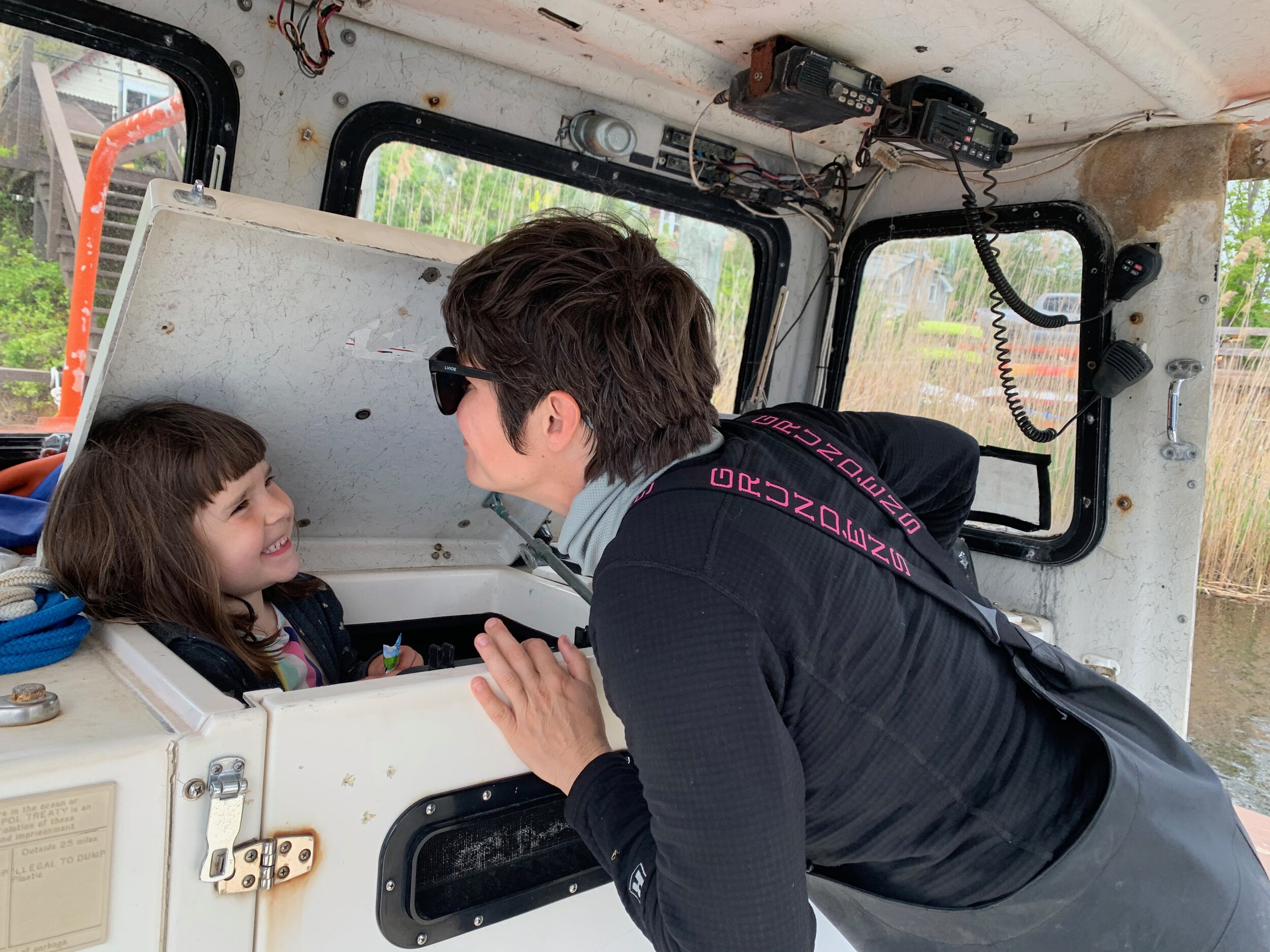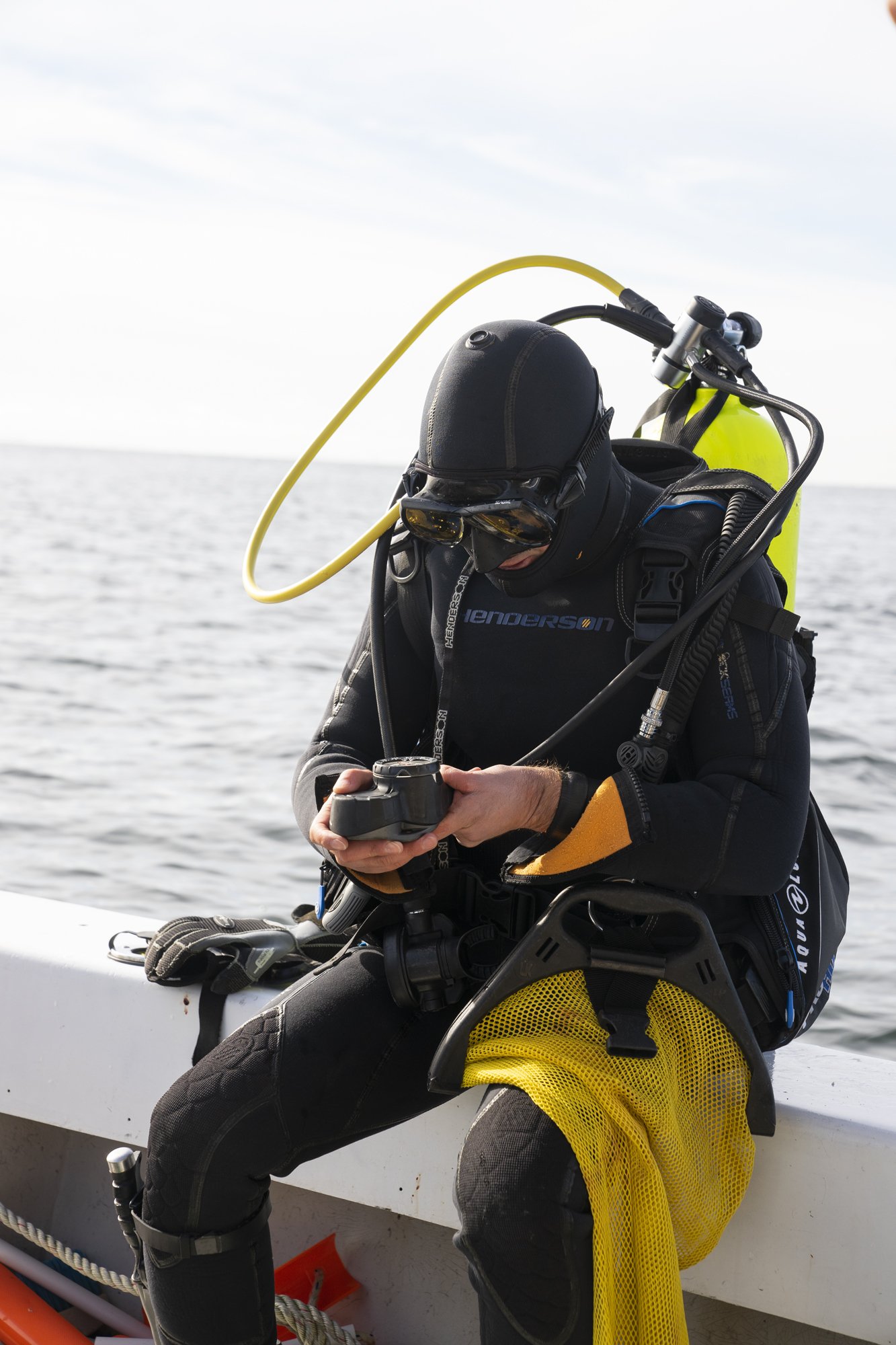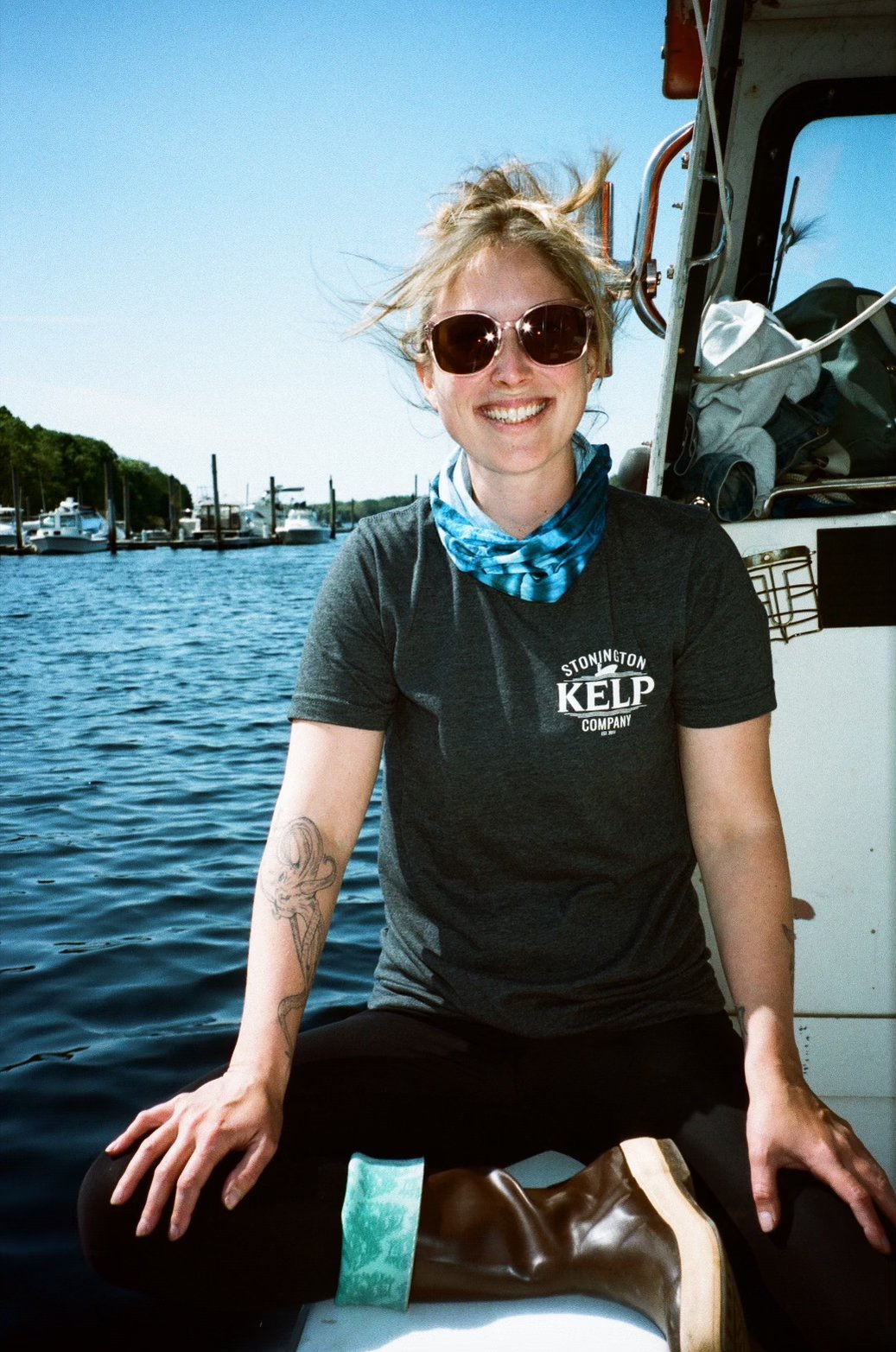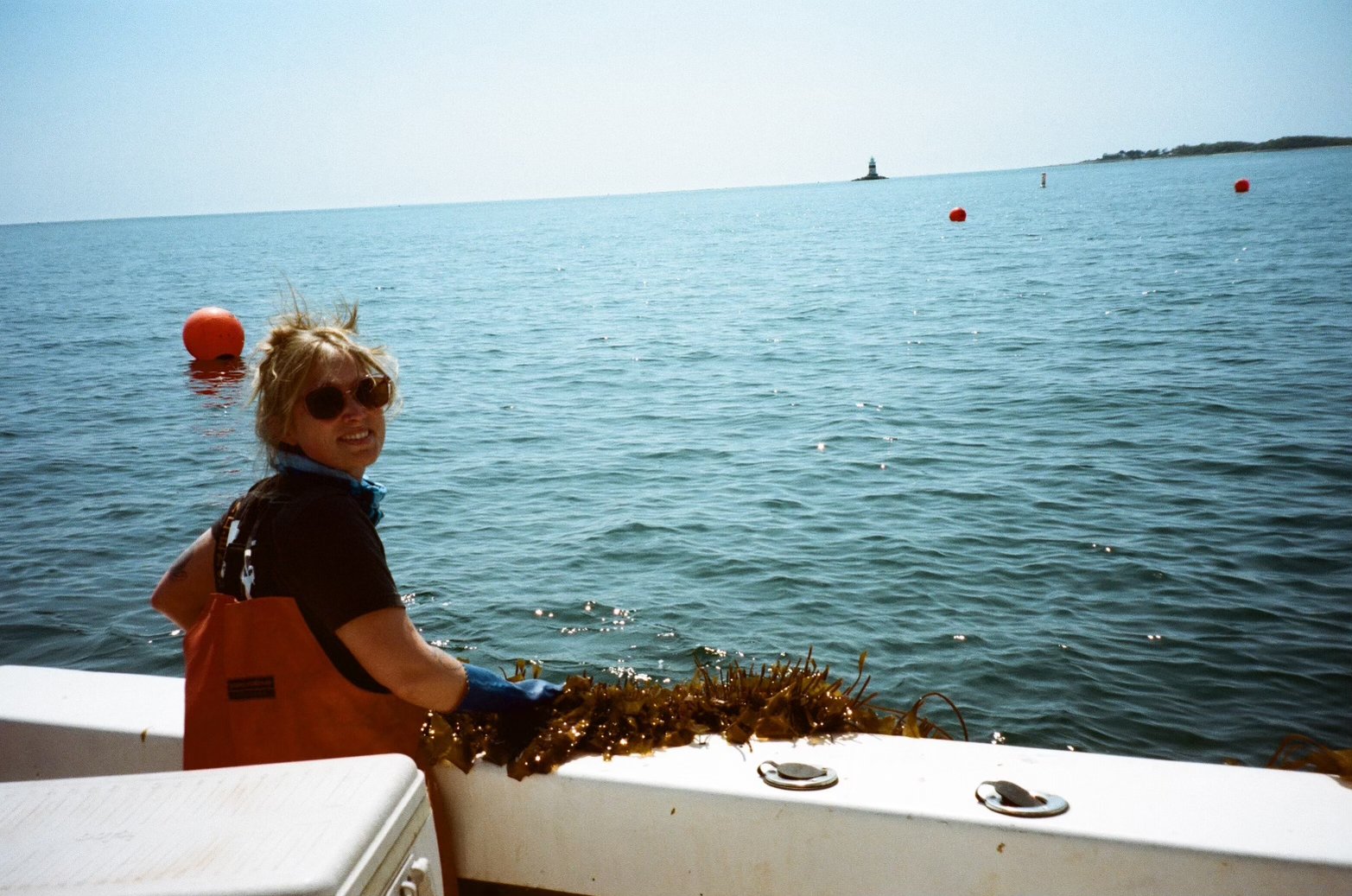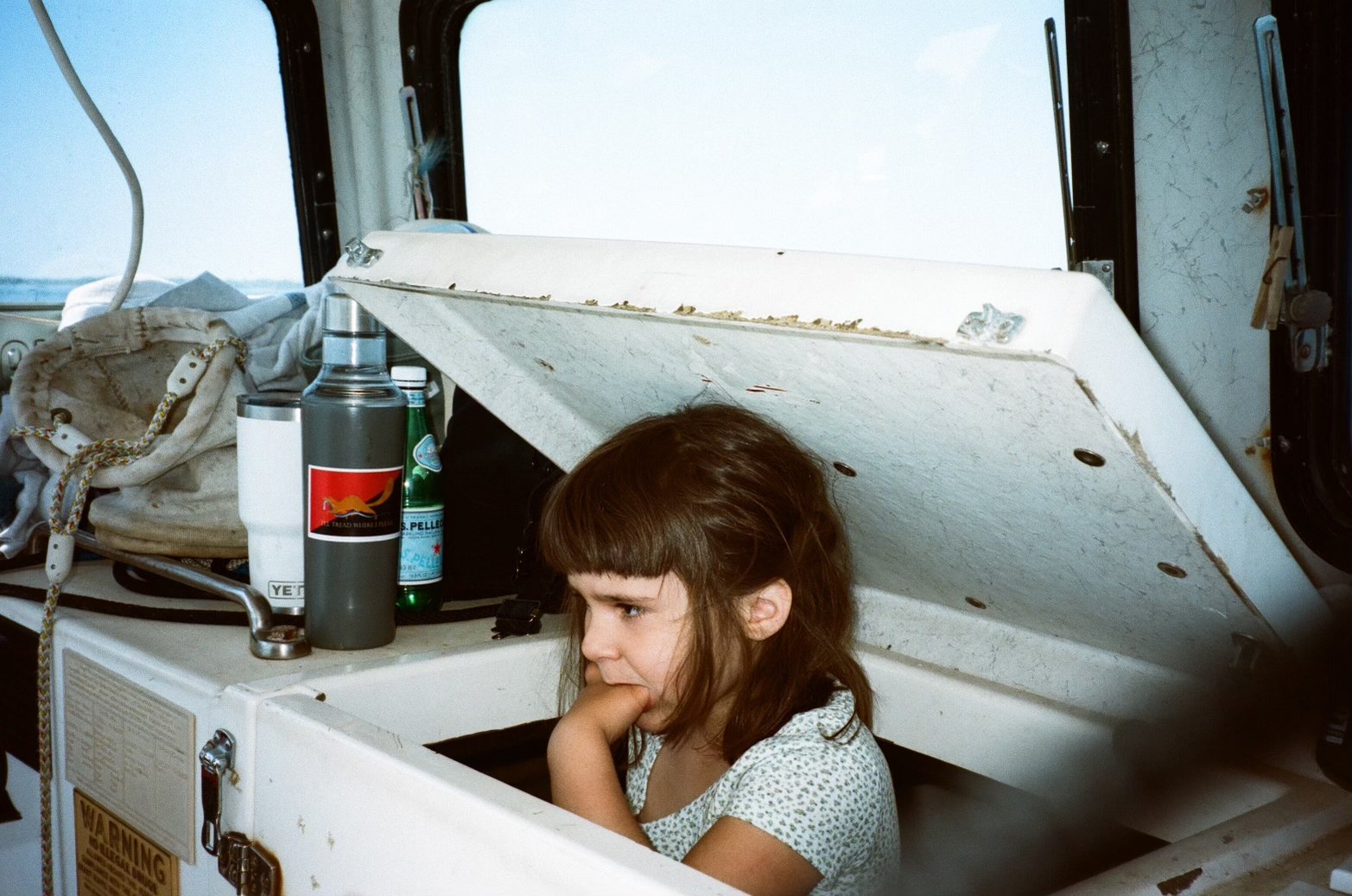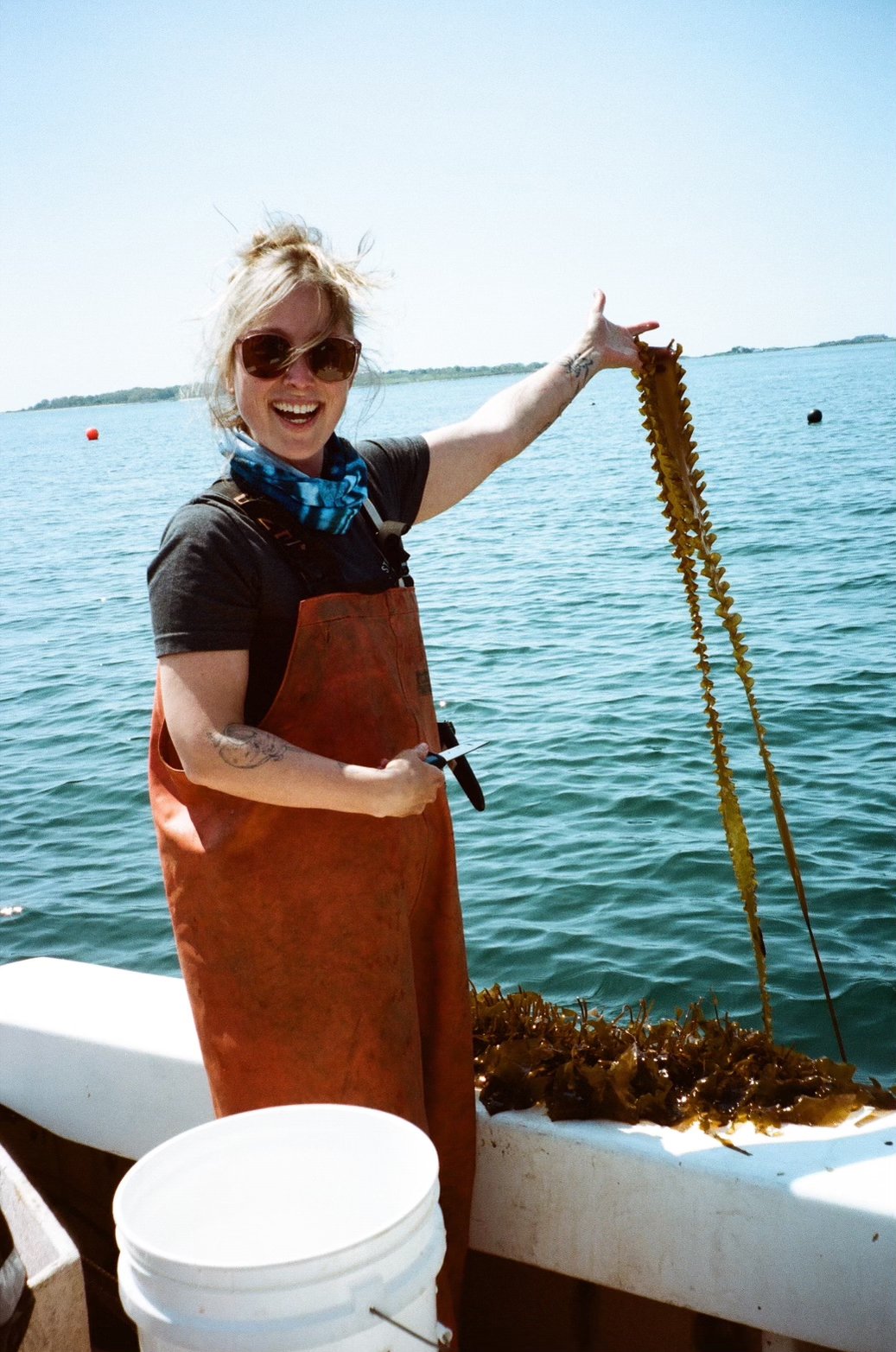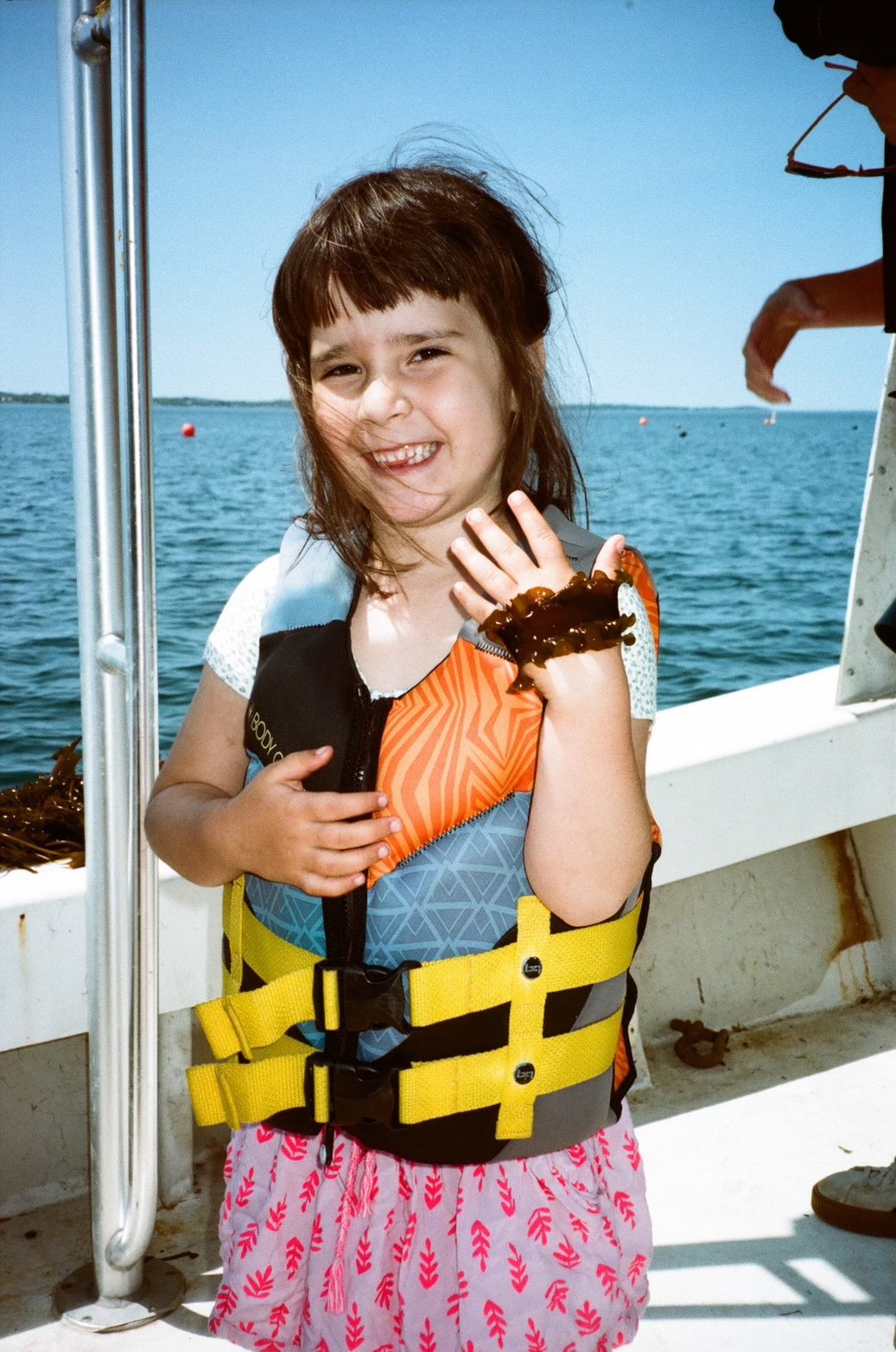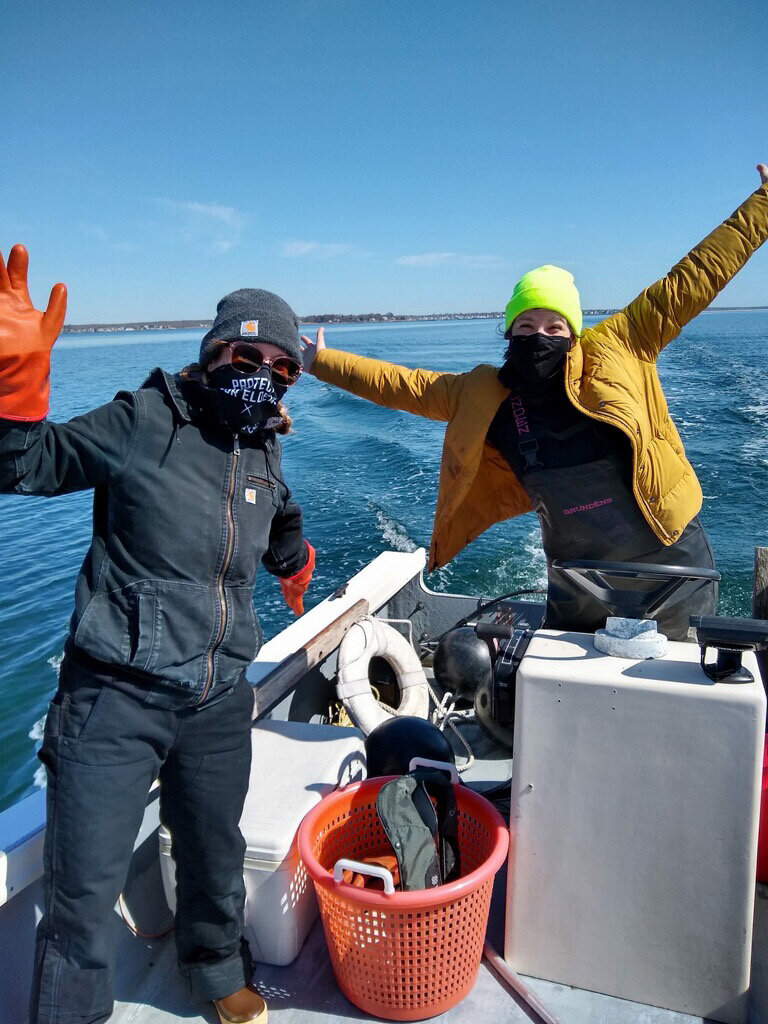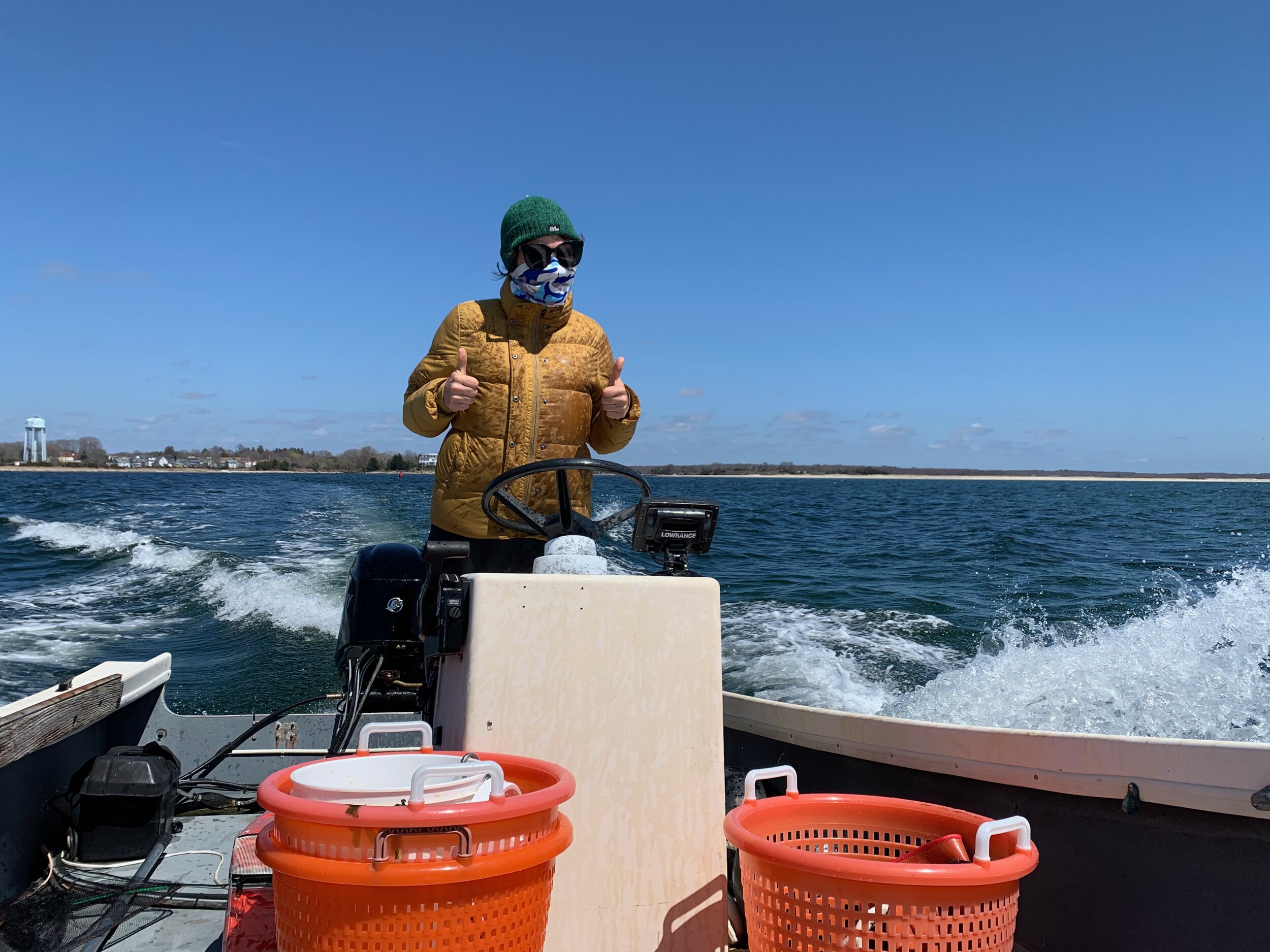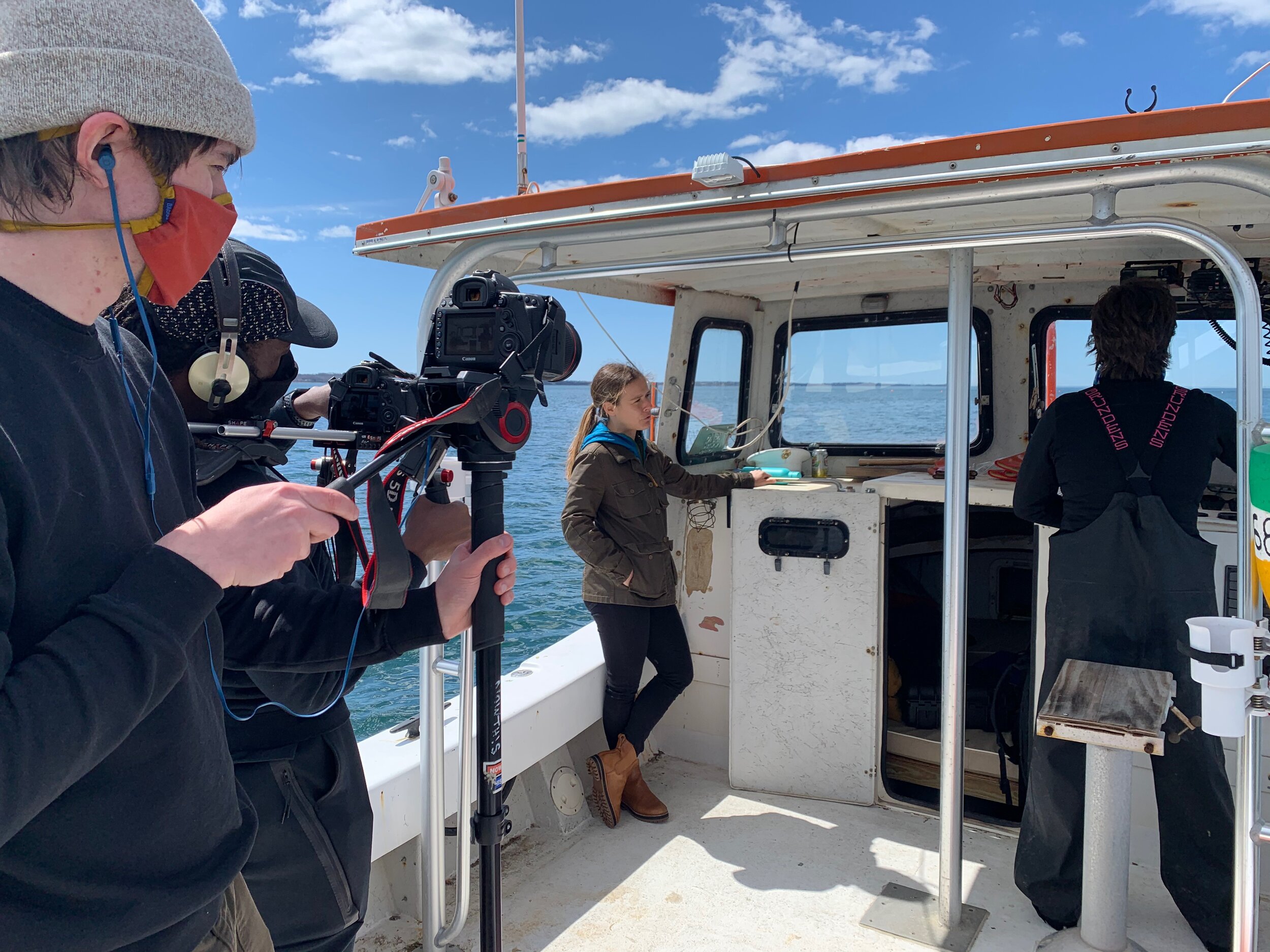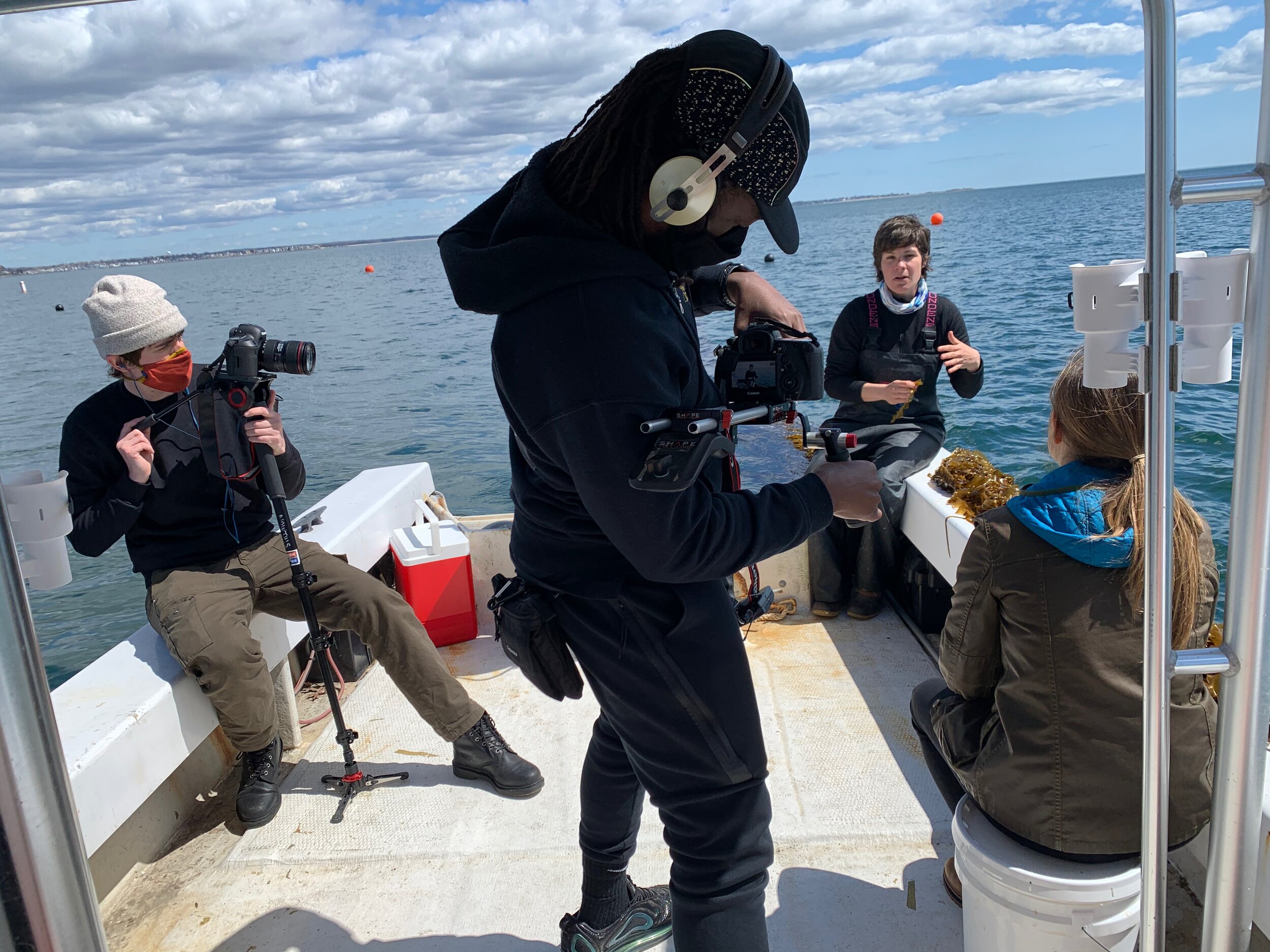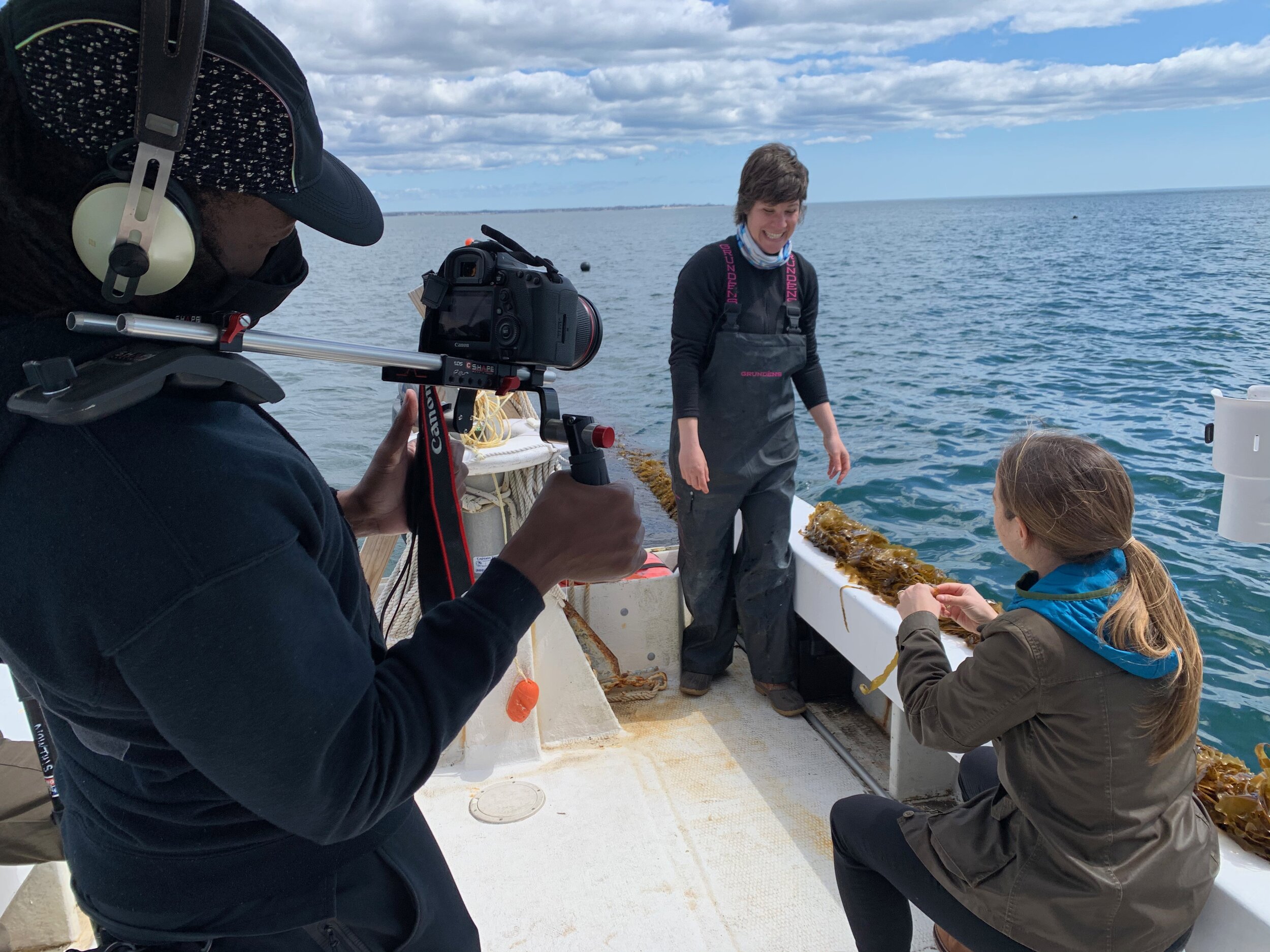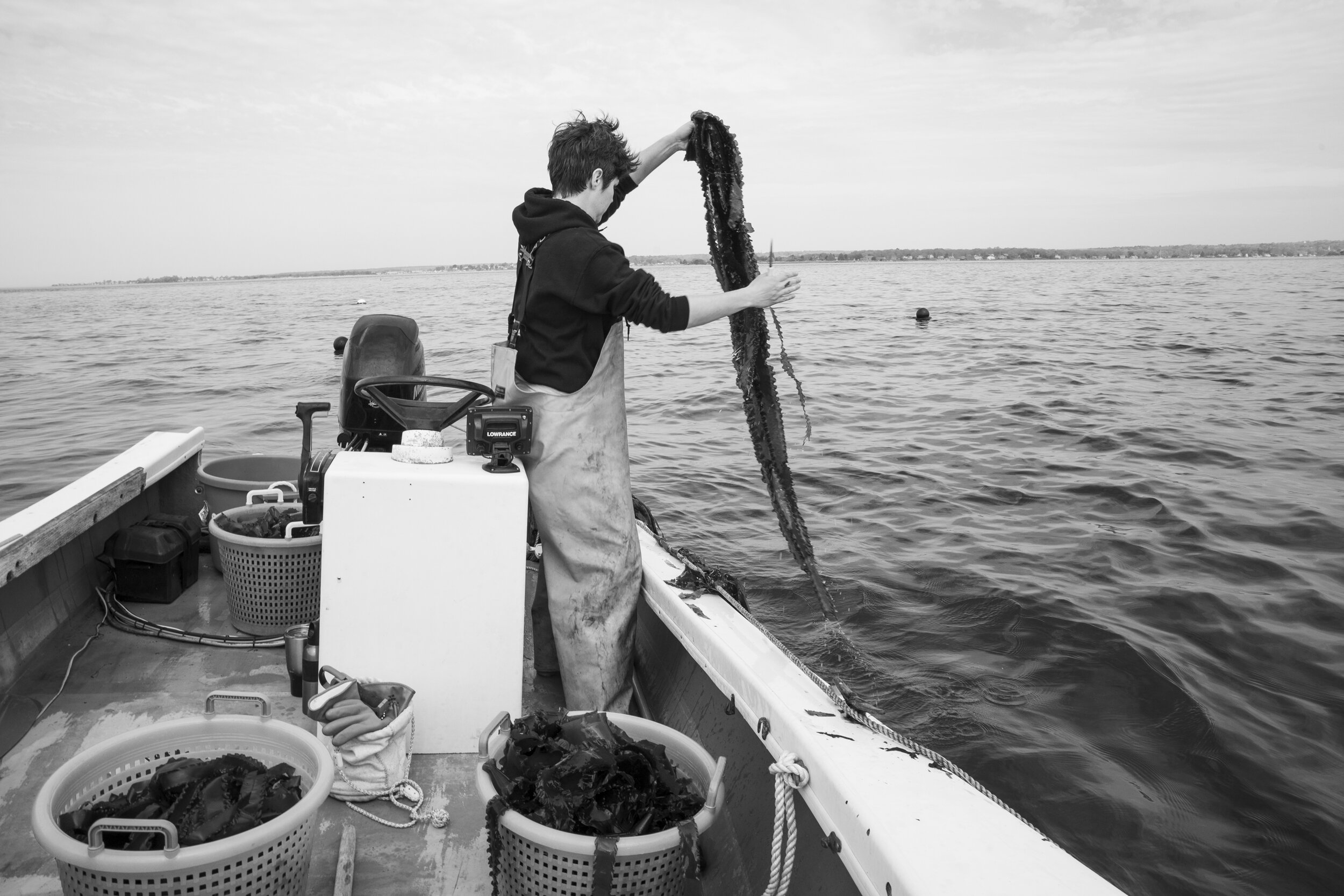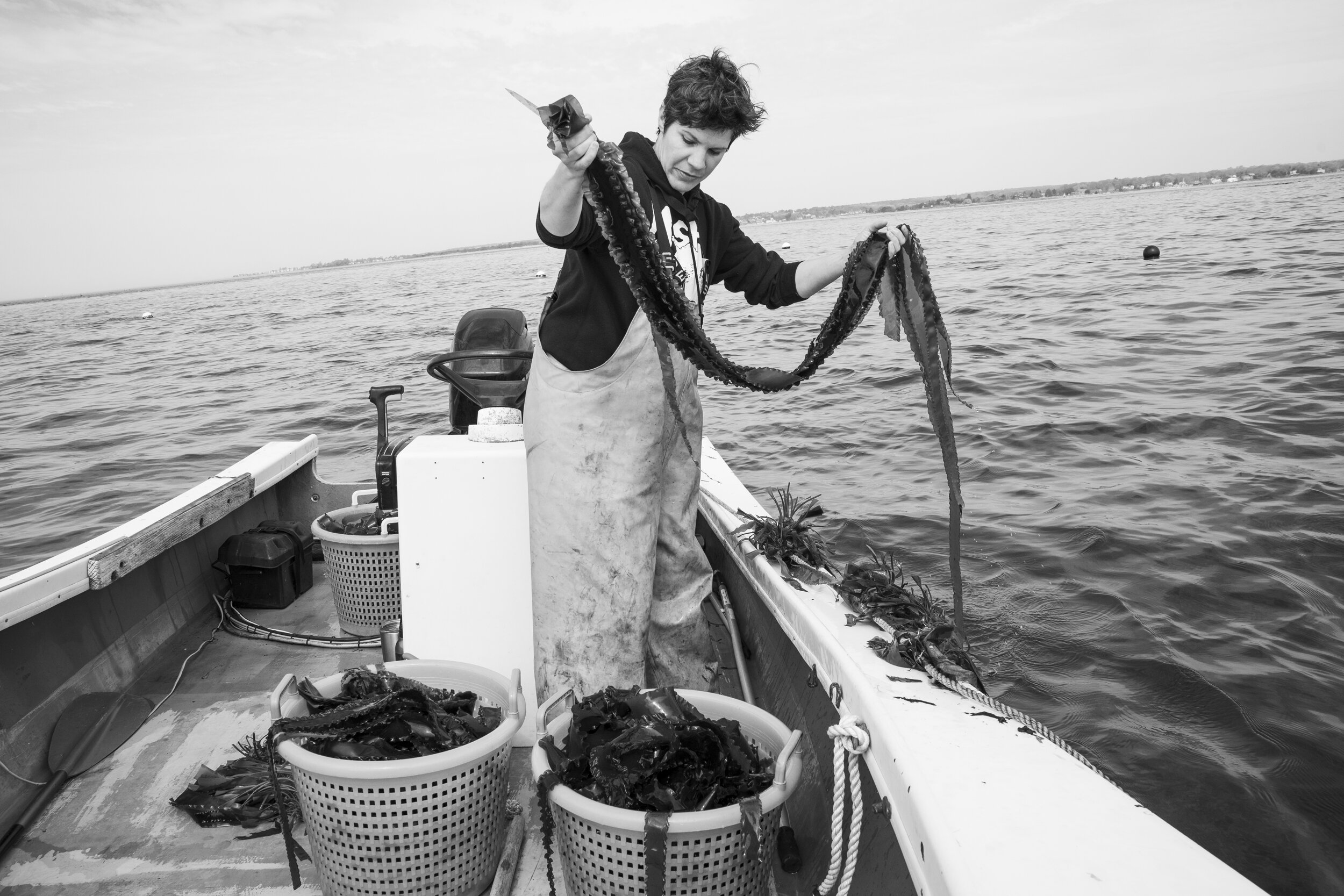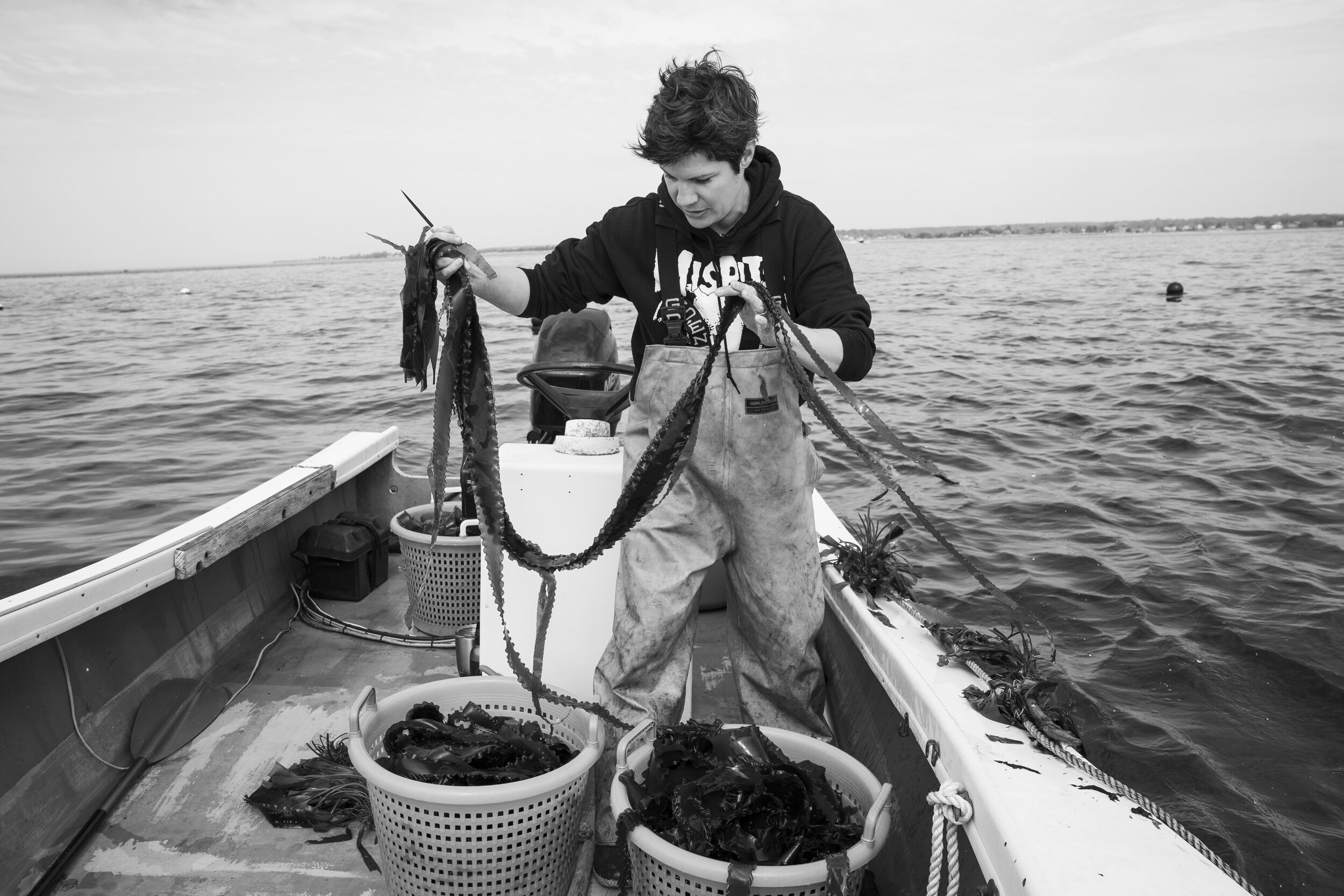As Suzie used a knife to cut the lasagna shaped blades, she made jokes about how she was “giving the kelp a haircut”. The way she harvests, allows the seaweed to continue to grow back and be harvested again later on. The harvested blades went into bright orange fish baskets to be weighed out for local chefs and farmers markets. She worked quickly and while it felt like time stood still on the farm we were only there for an hour at most. When the baskets were full, the lines were unhooked from the boat and I watched as the remaining sugar kelp slowly sank back to its’ home beneath the water’s surface, ready to regenerate.
Looking back on this experience is amusing to me. I can remember being excited and smiling all day. And I can remember talking my husband’s ear off (or really anyone who would listen) about the day and what I learned. But what I find truly amazing is how that trip brought my life together in a way that feels so obvious yet unexpected. It was as if a puzzle was scattered on a table and someone had just flipped all the pieces over to reveal what puzzle I was actually working on. My project in grad school had me thinking and researching all the BAD things that were happening to our oceans. I was overwhelmed with the negative effects and the pollution, at times it felt debilitating. Suzie and her farm changed my attitude - there are ways to positively help the water, and kelp is one of them. The experience gave me hope that we humans can connect with our oceans as a resource in a mutually beneficial way. Yes there is still pollution, yes there is still overfishing, yes there is still climate change…. but a big YES there are solutions and YES we can work on ocean pollution and climate change together. When it comes to my art practice, ocean research, and really my everyday life - kelp is here to stay!



